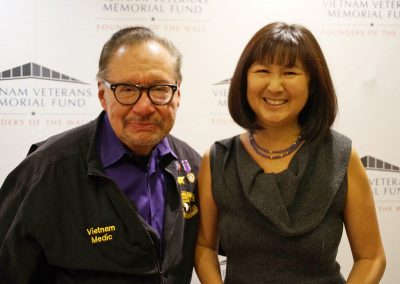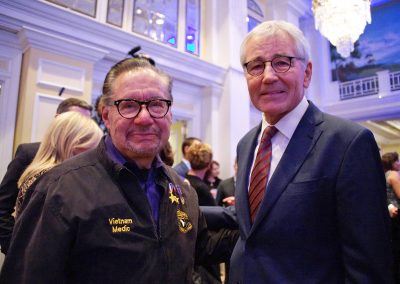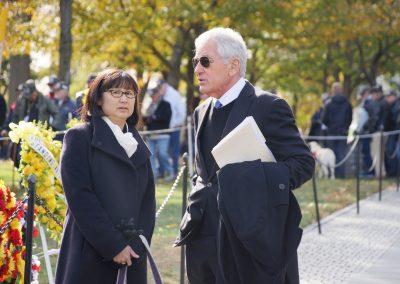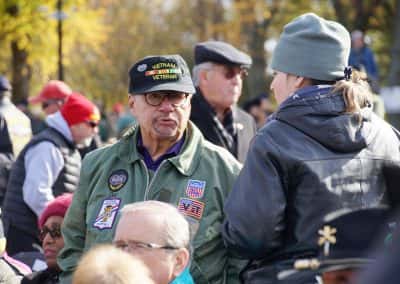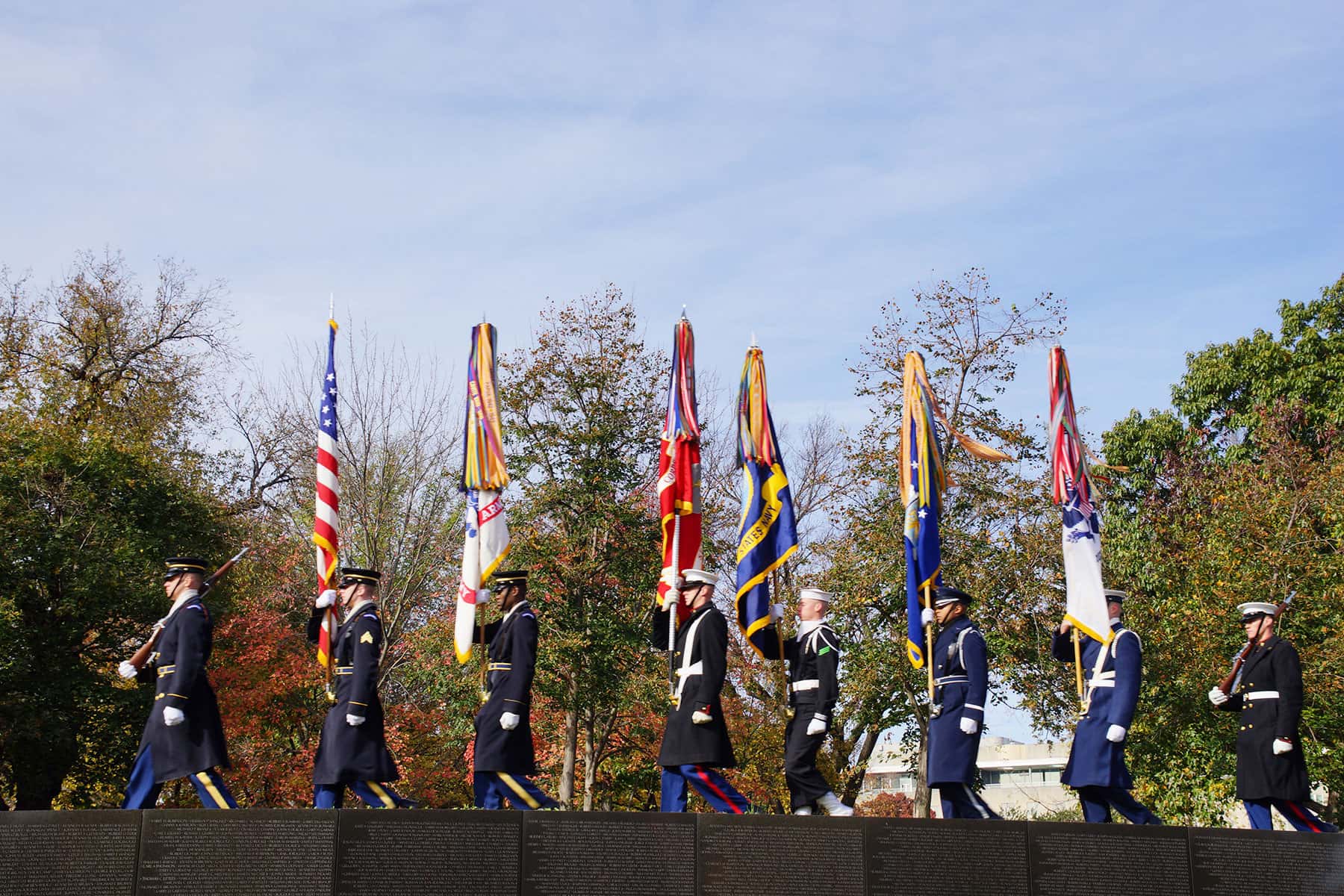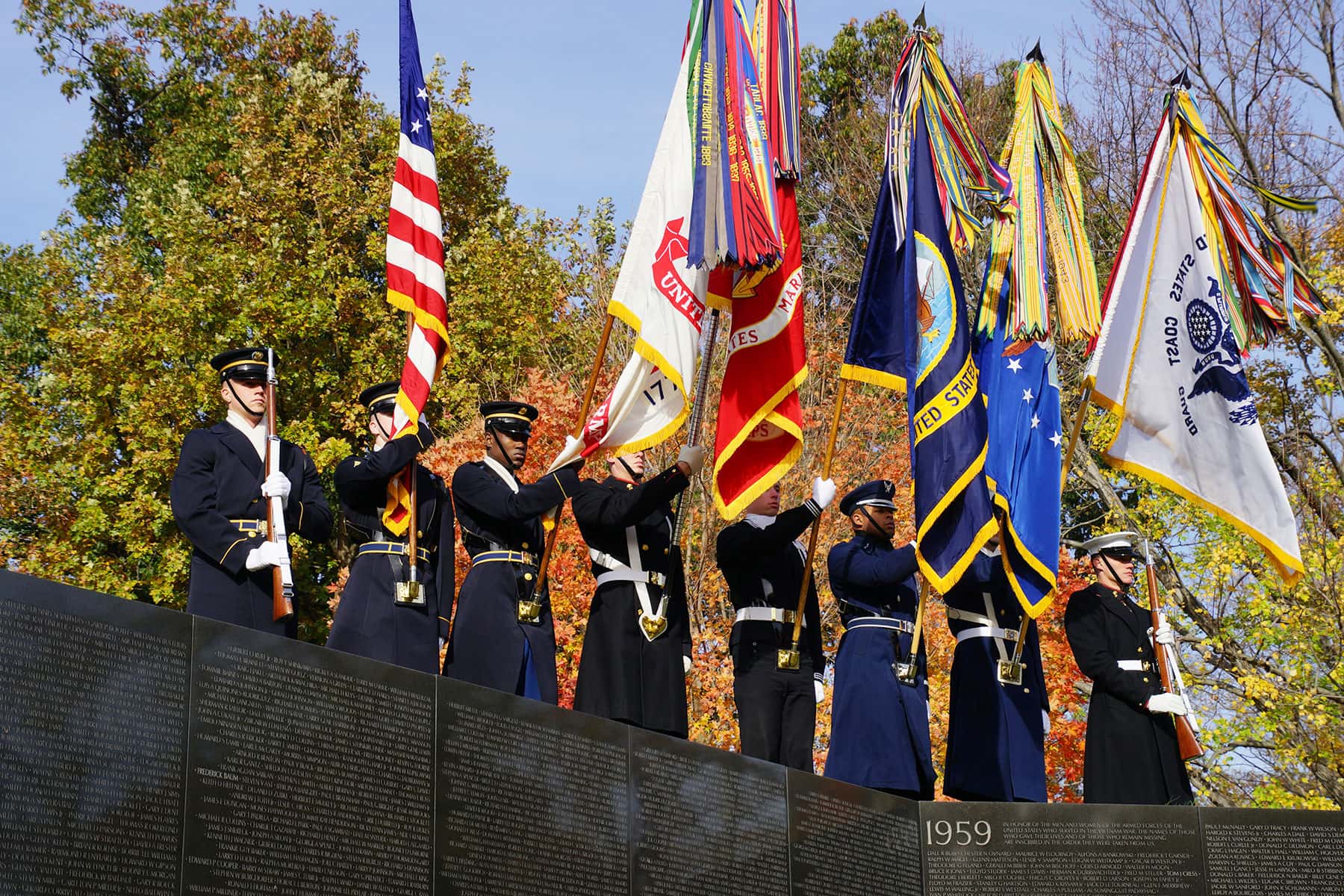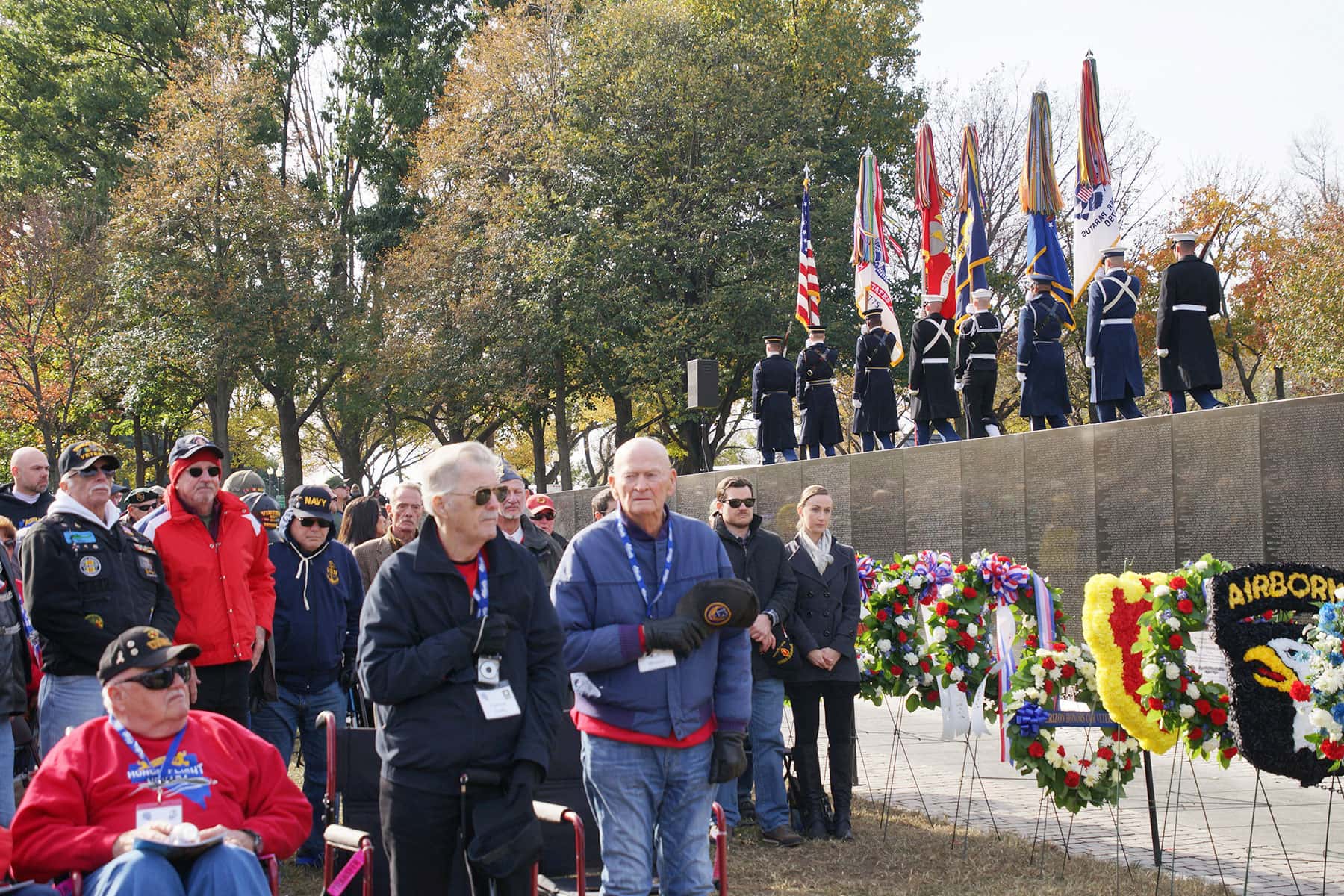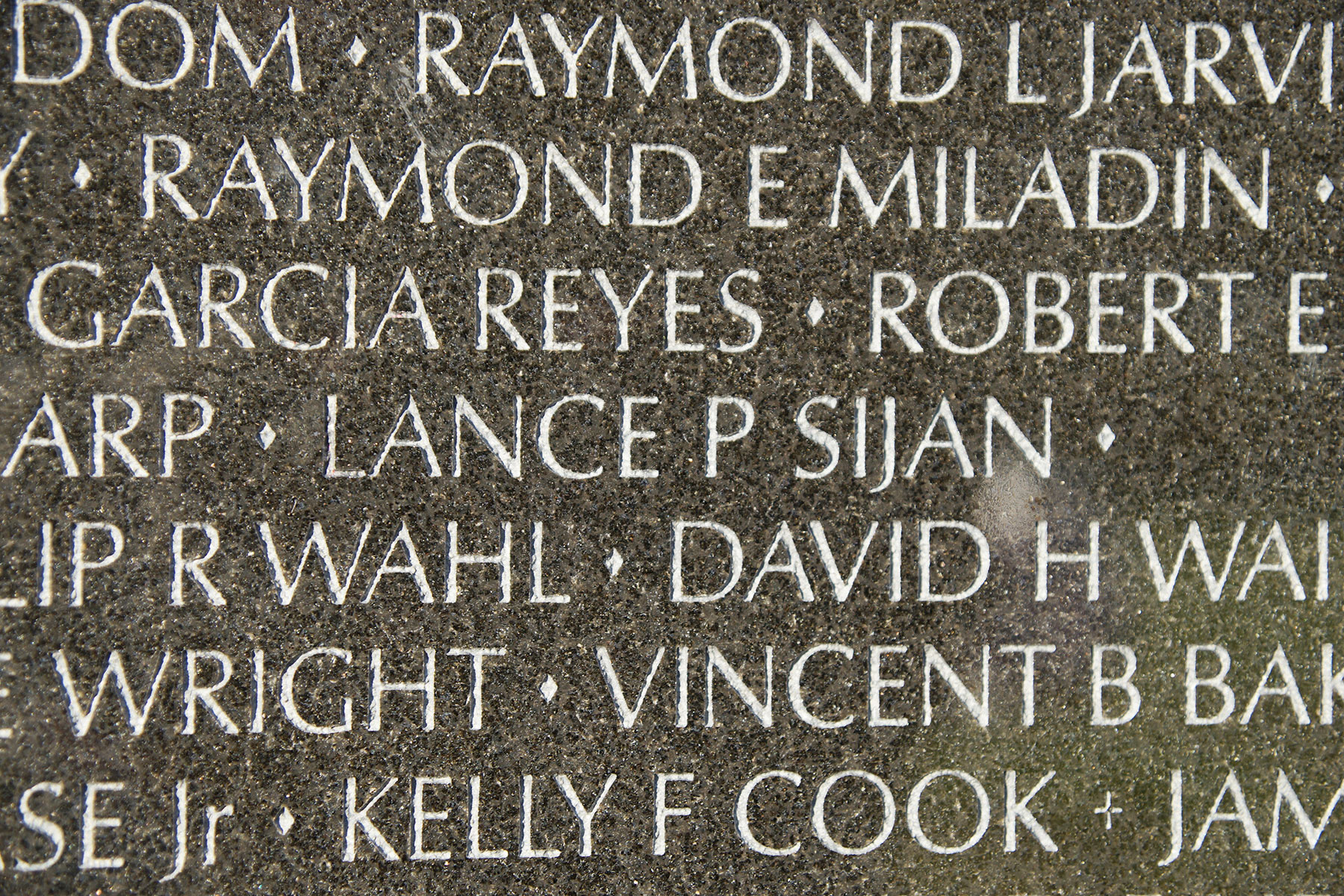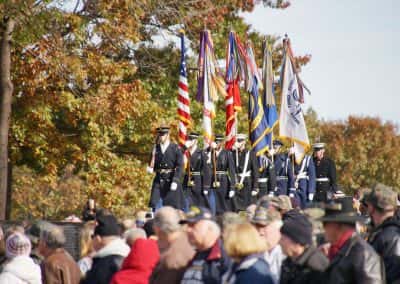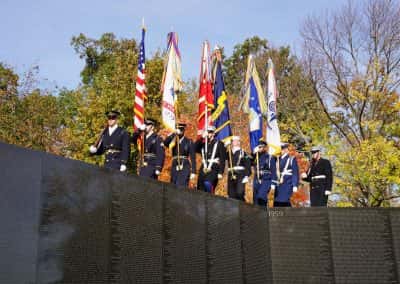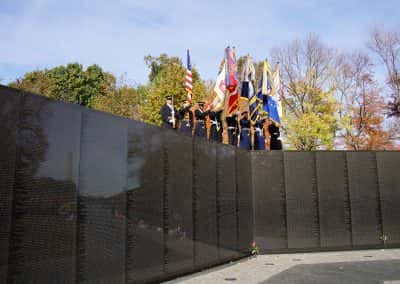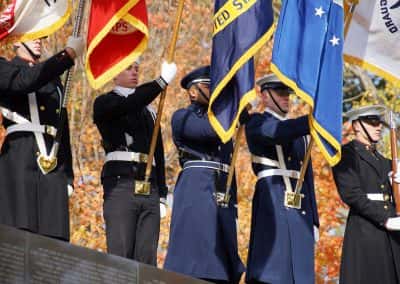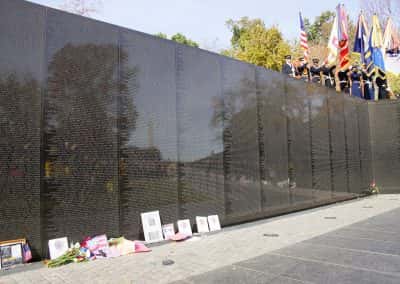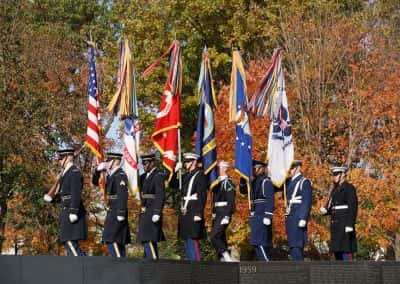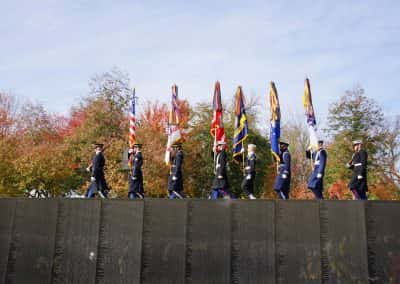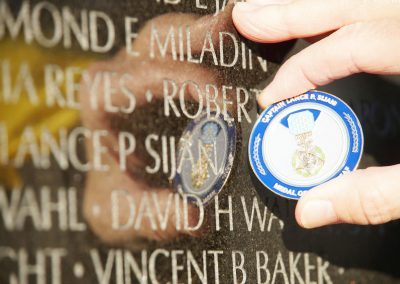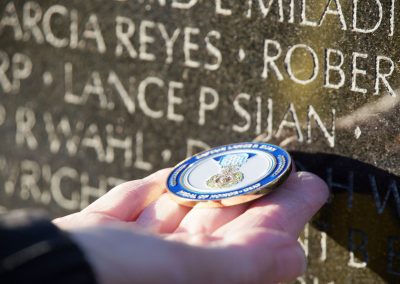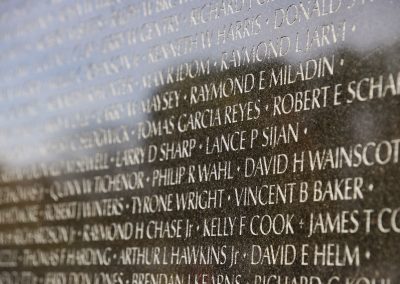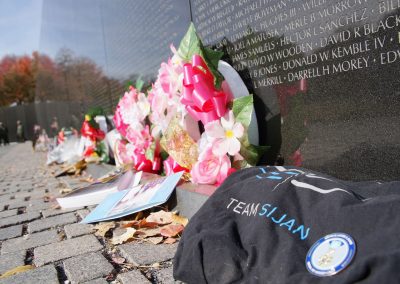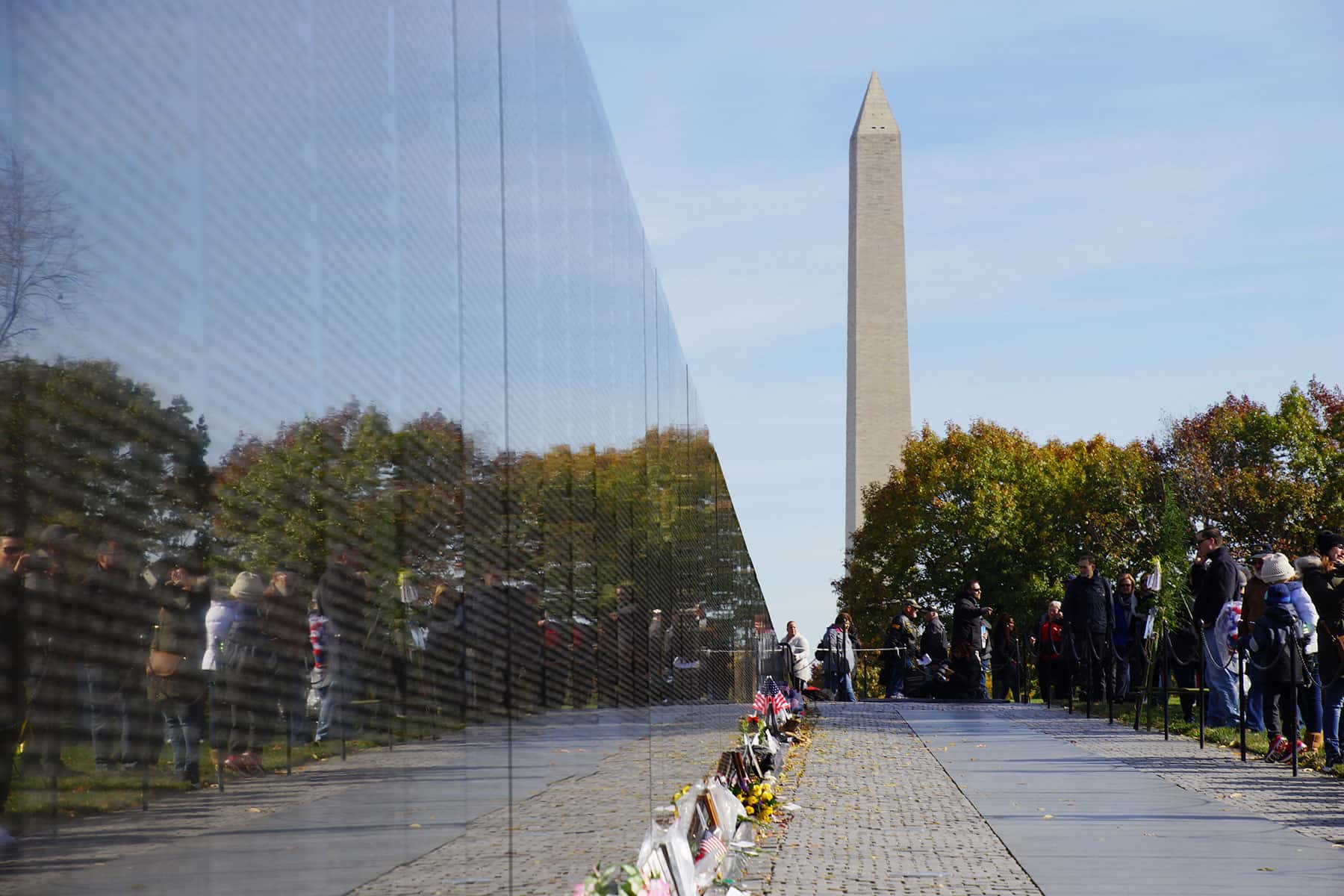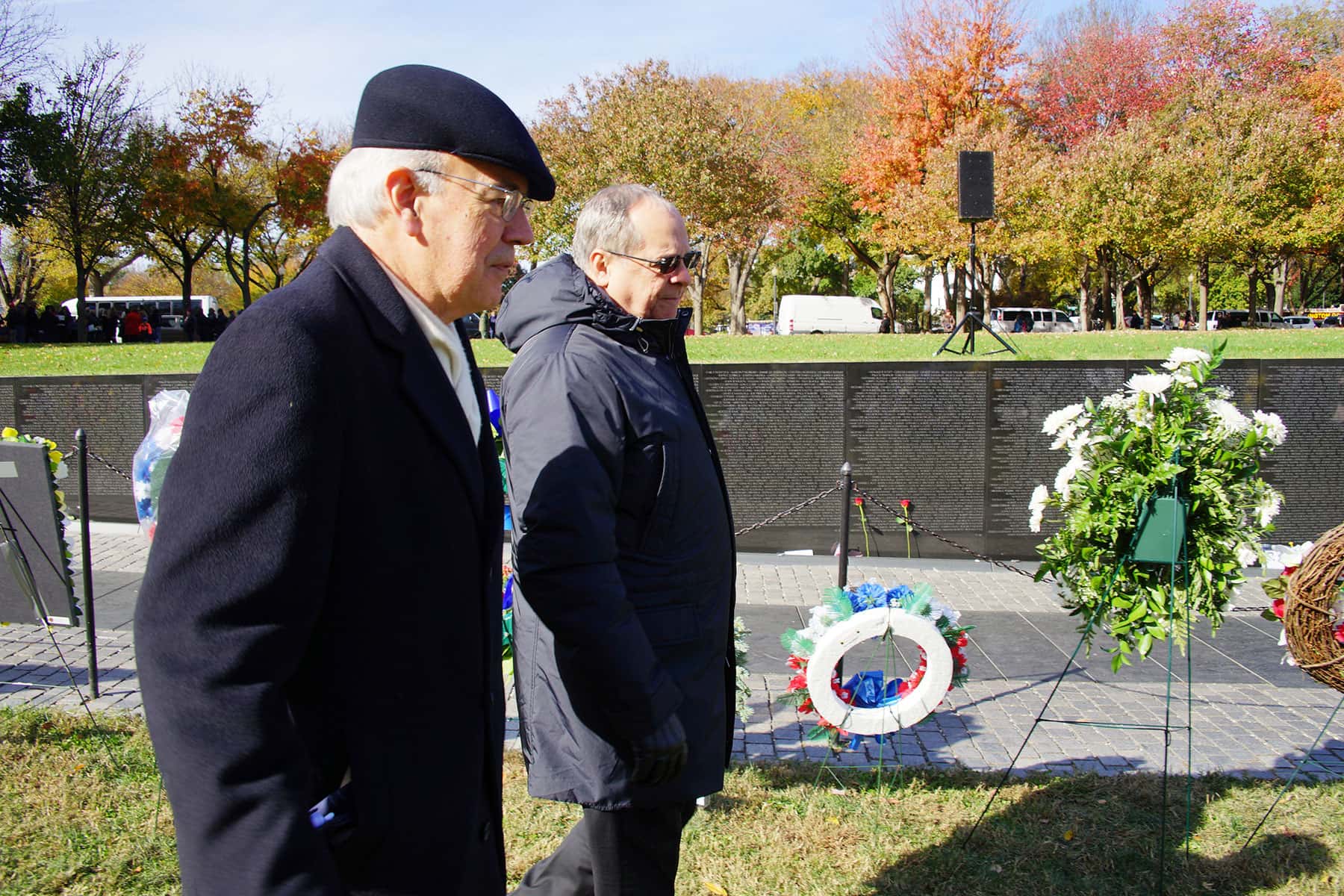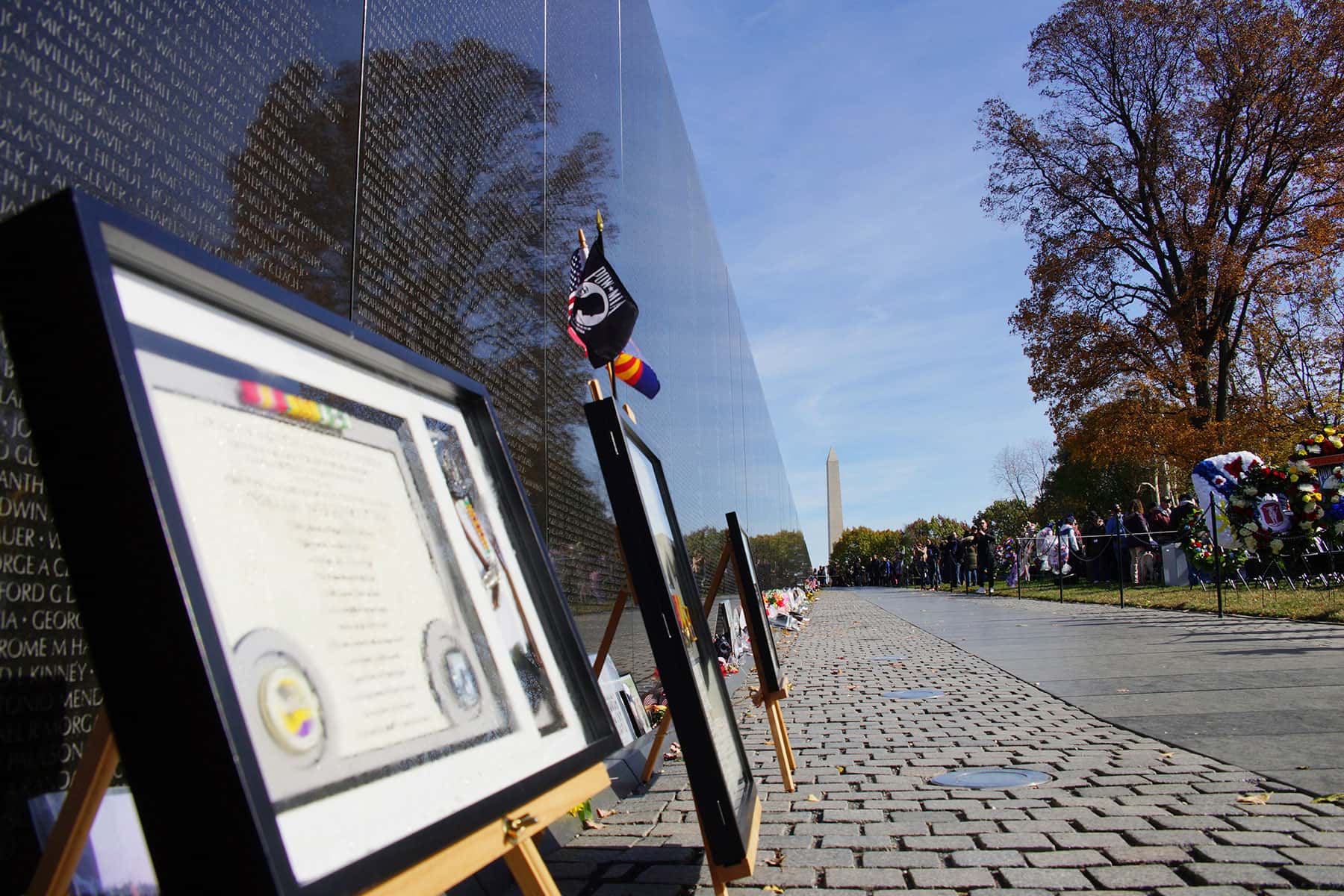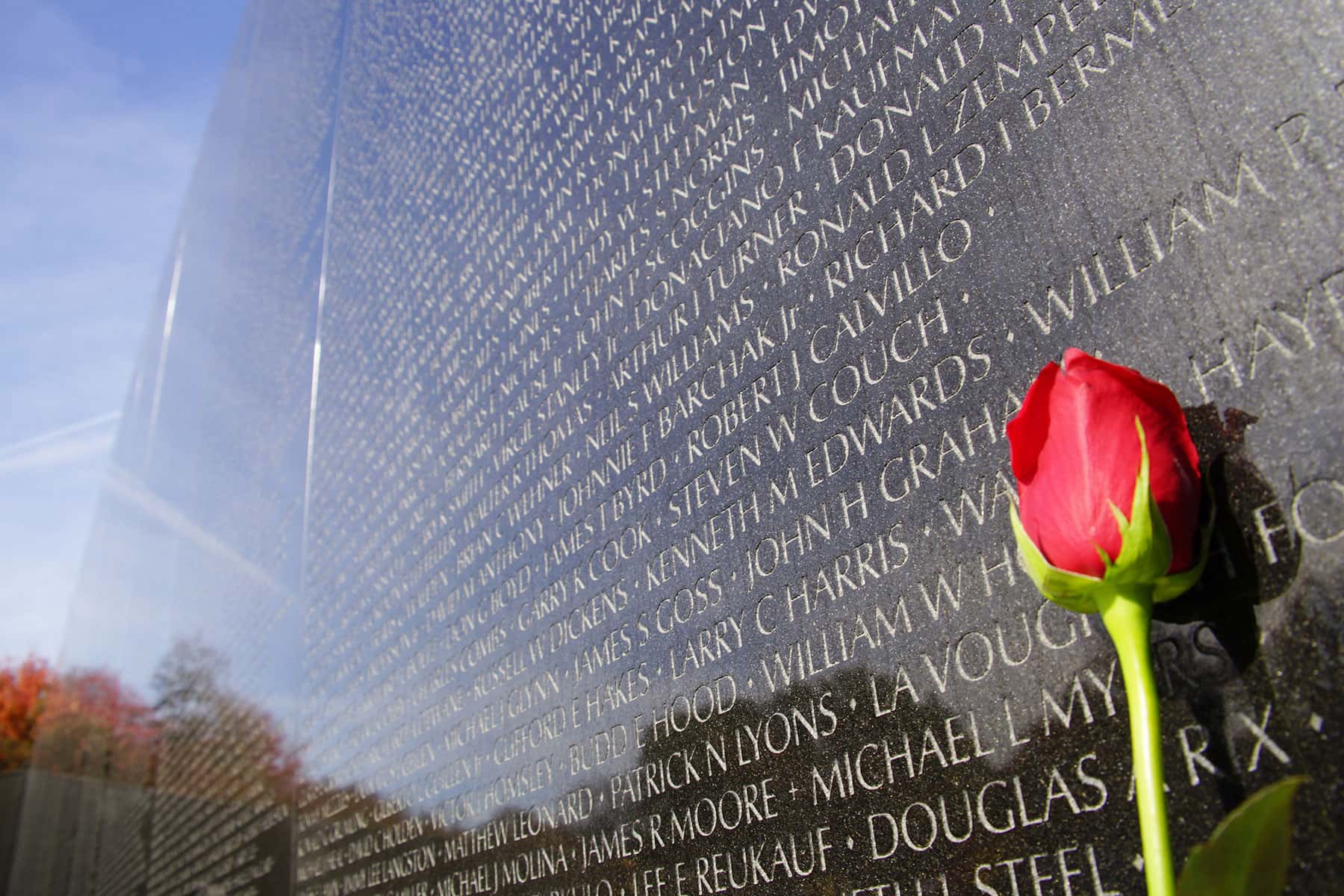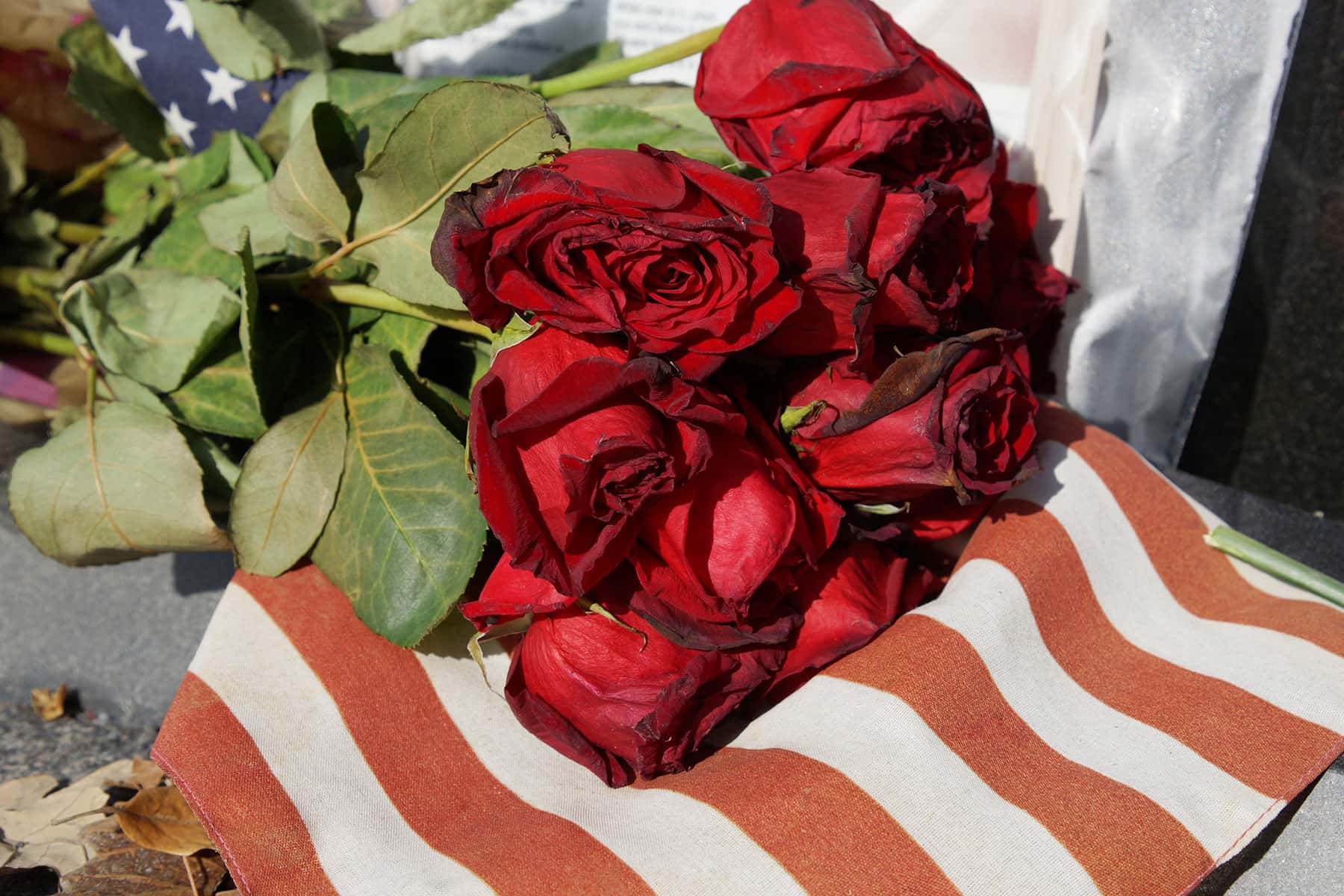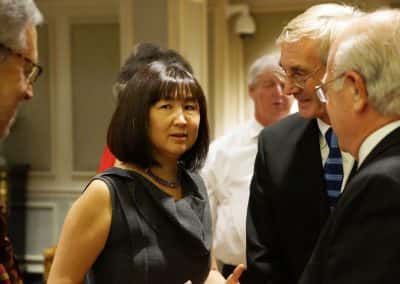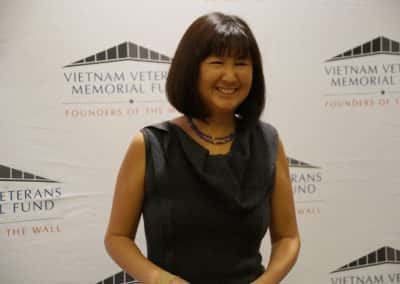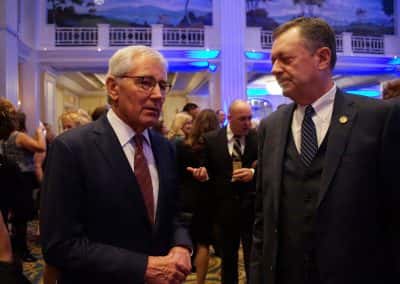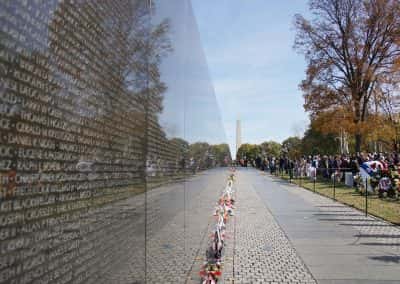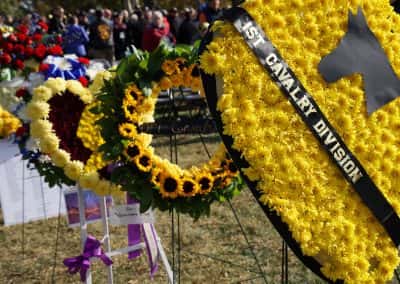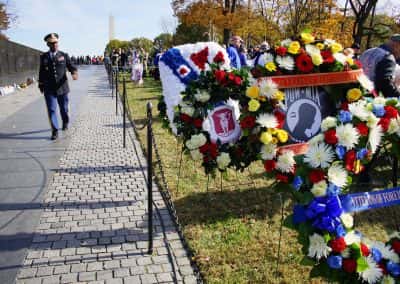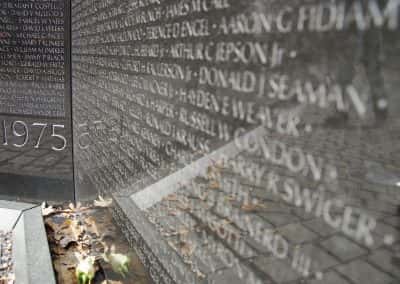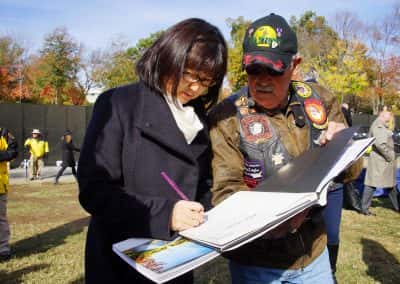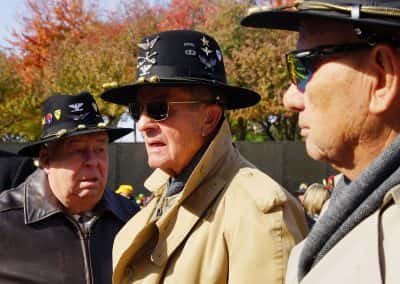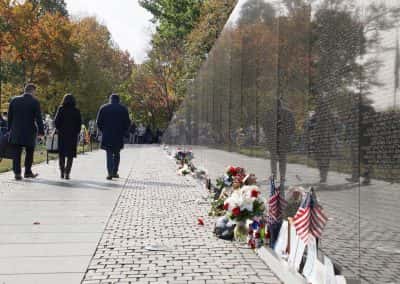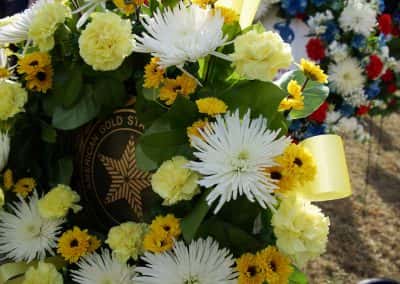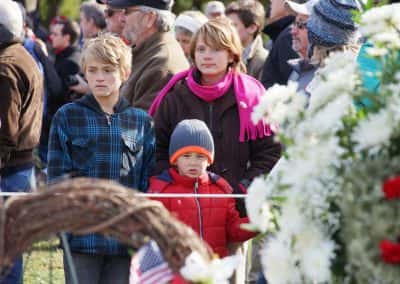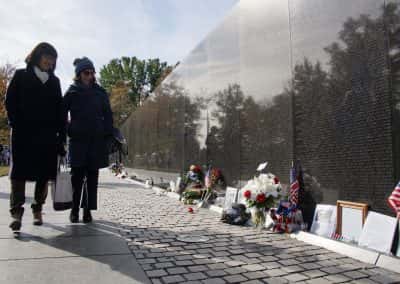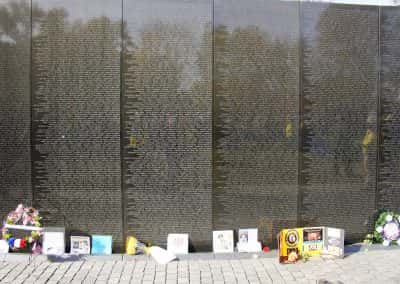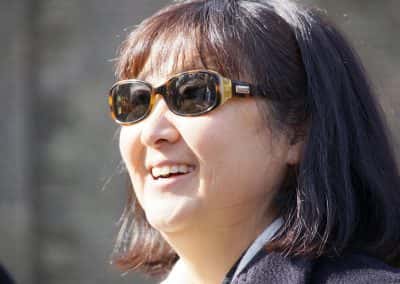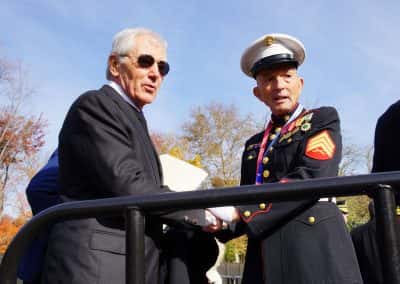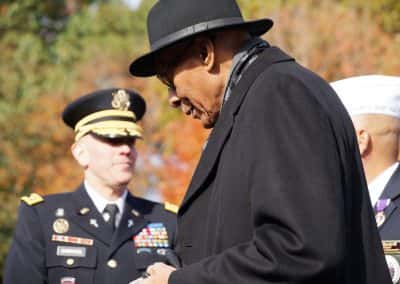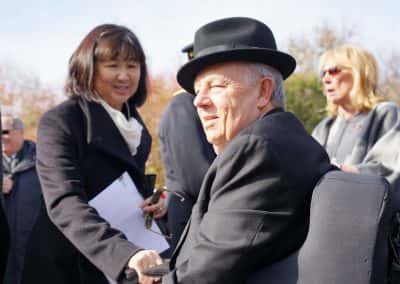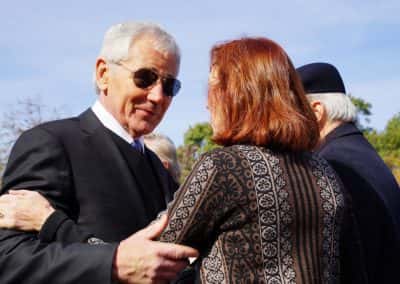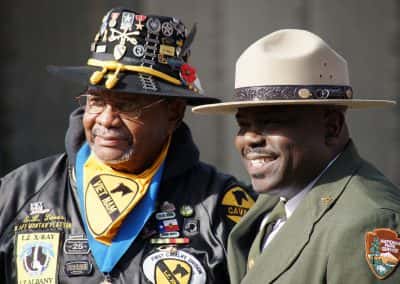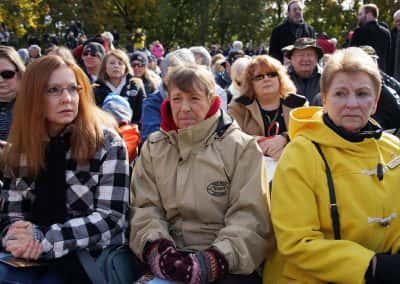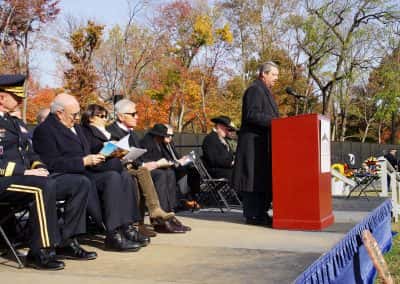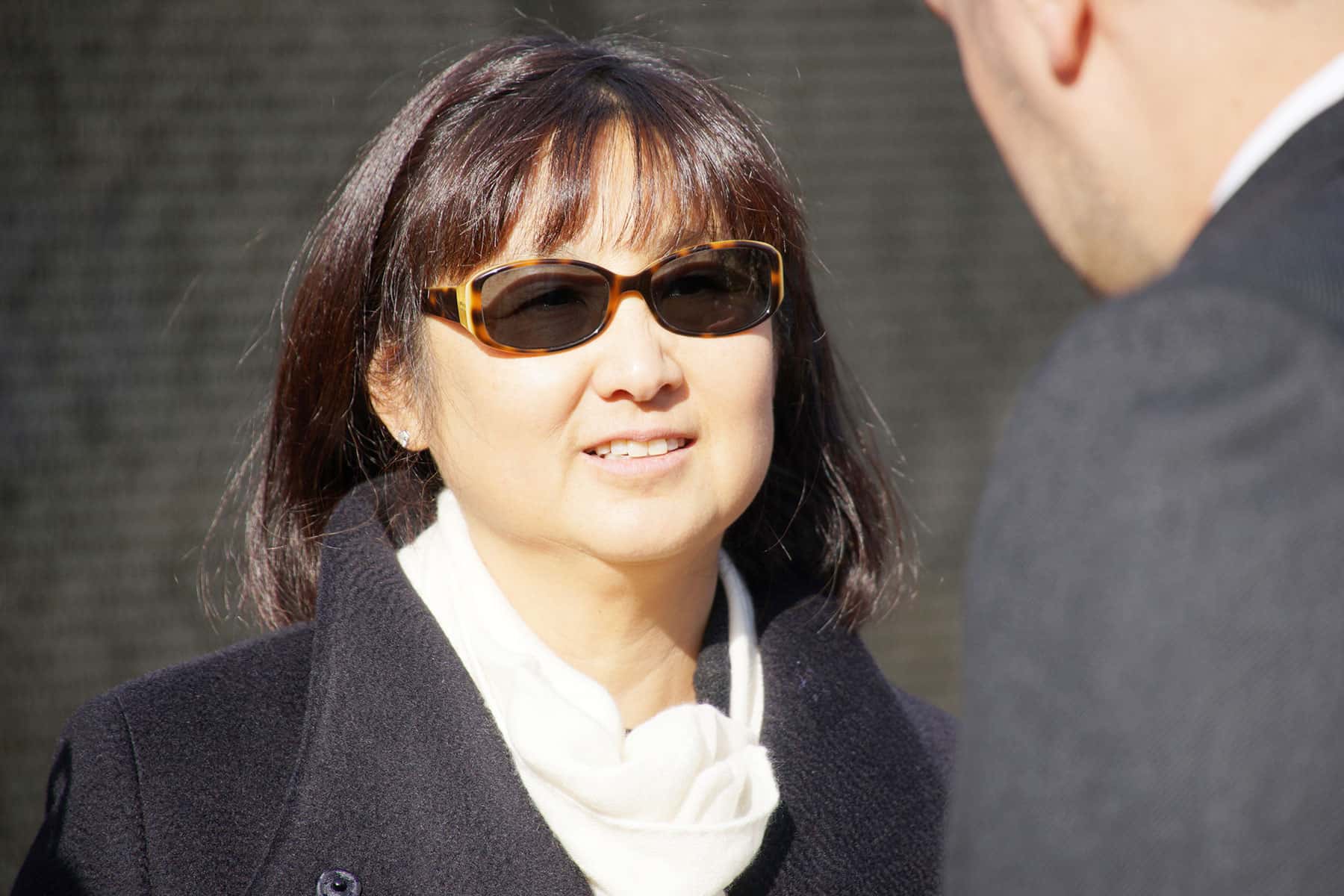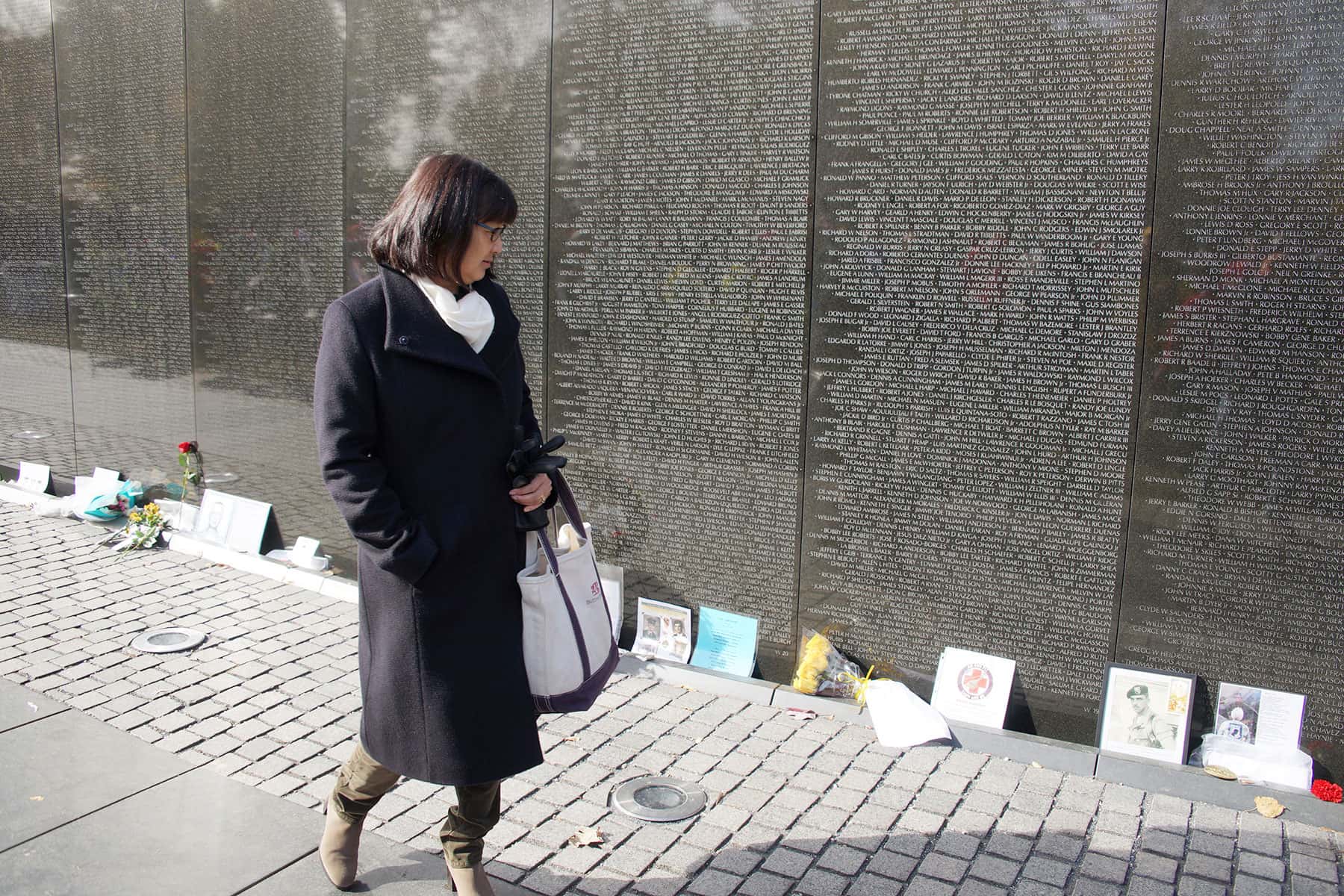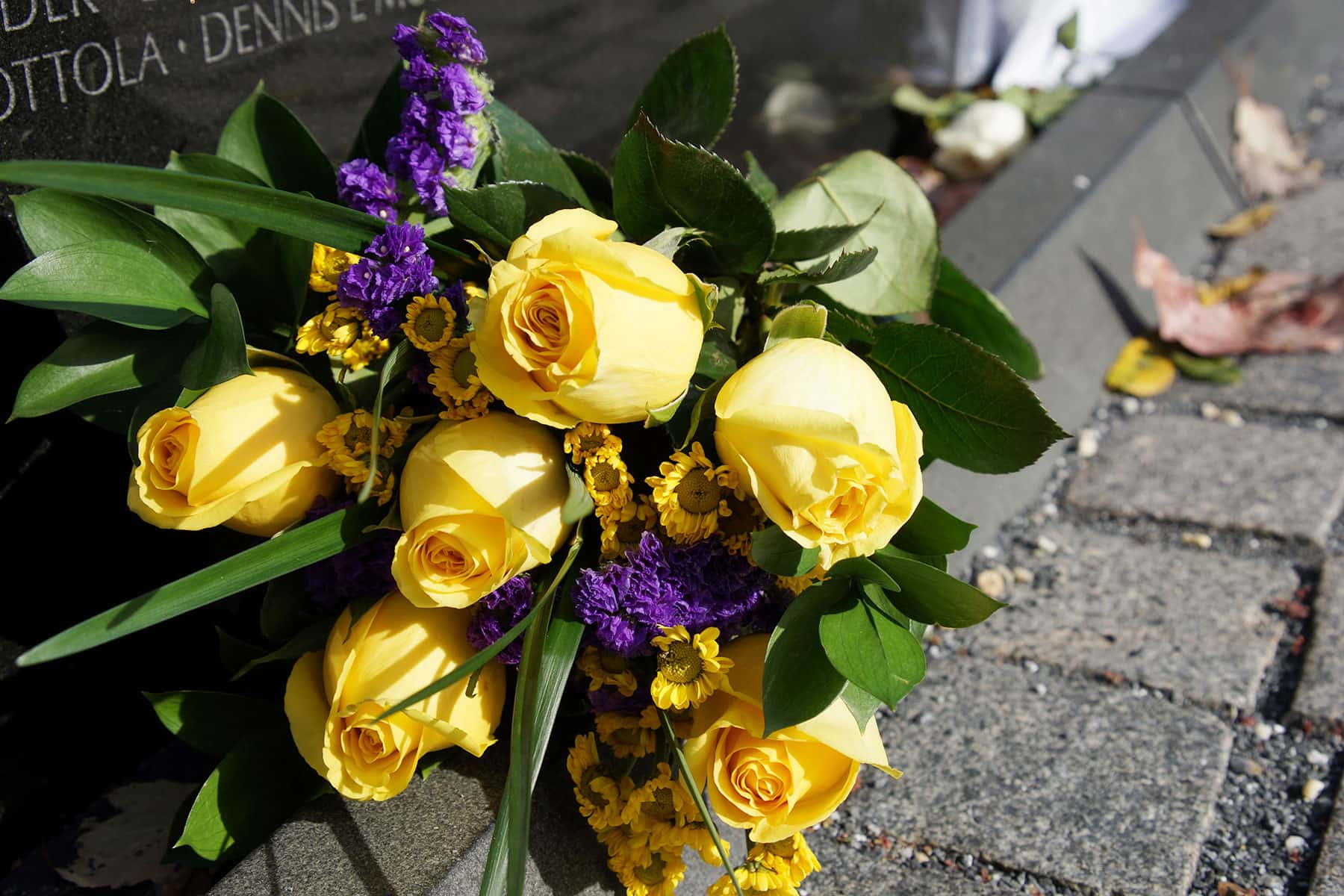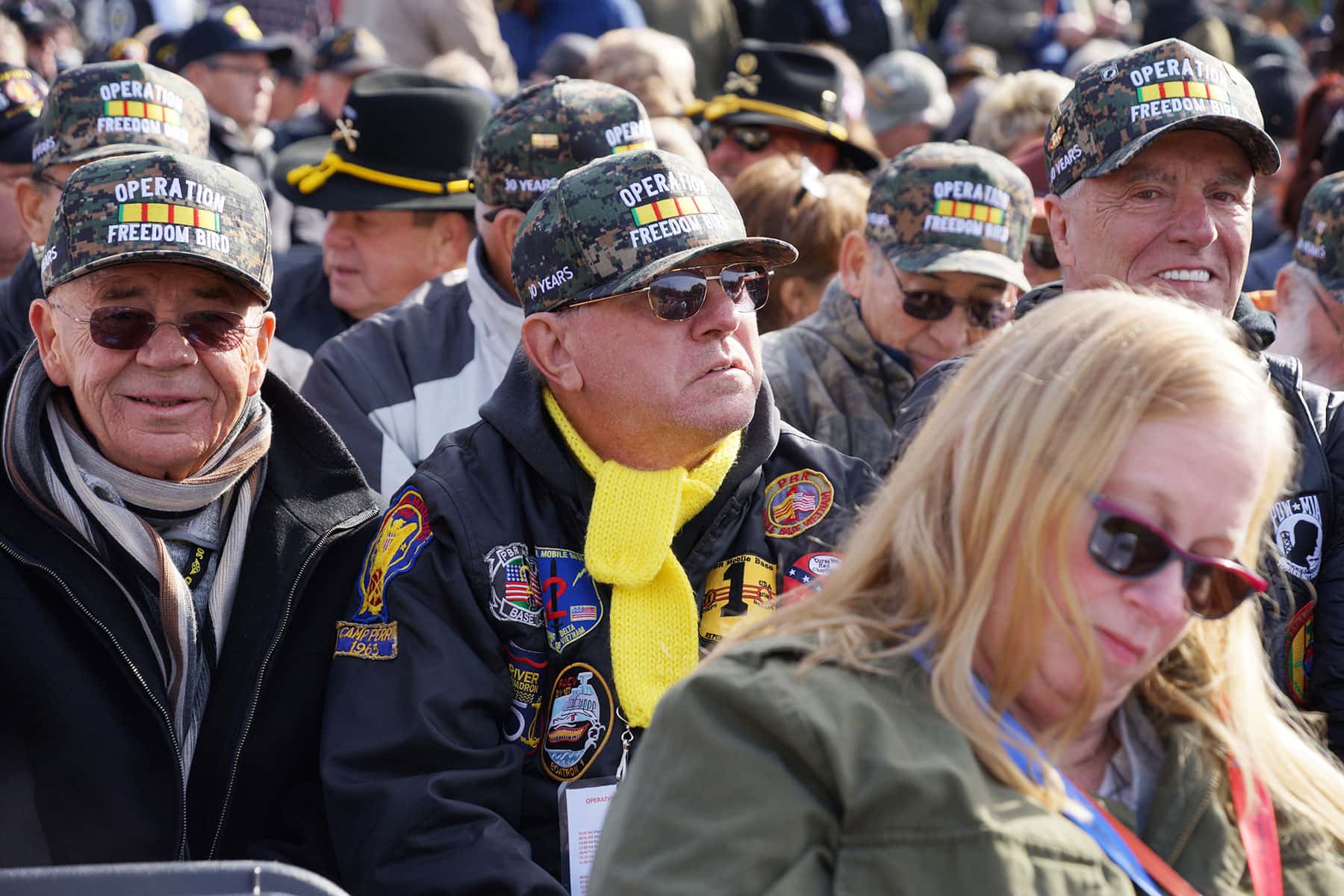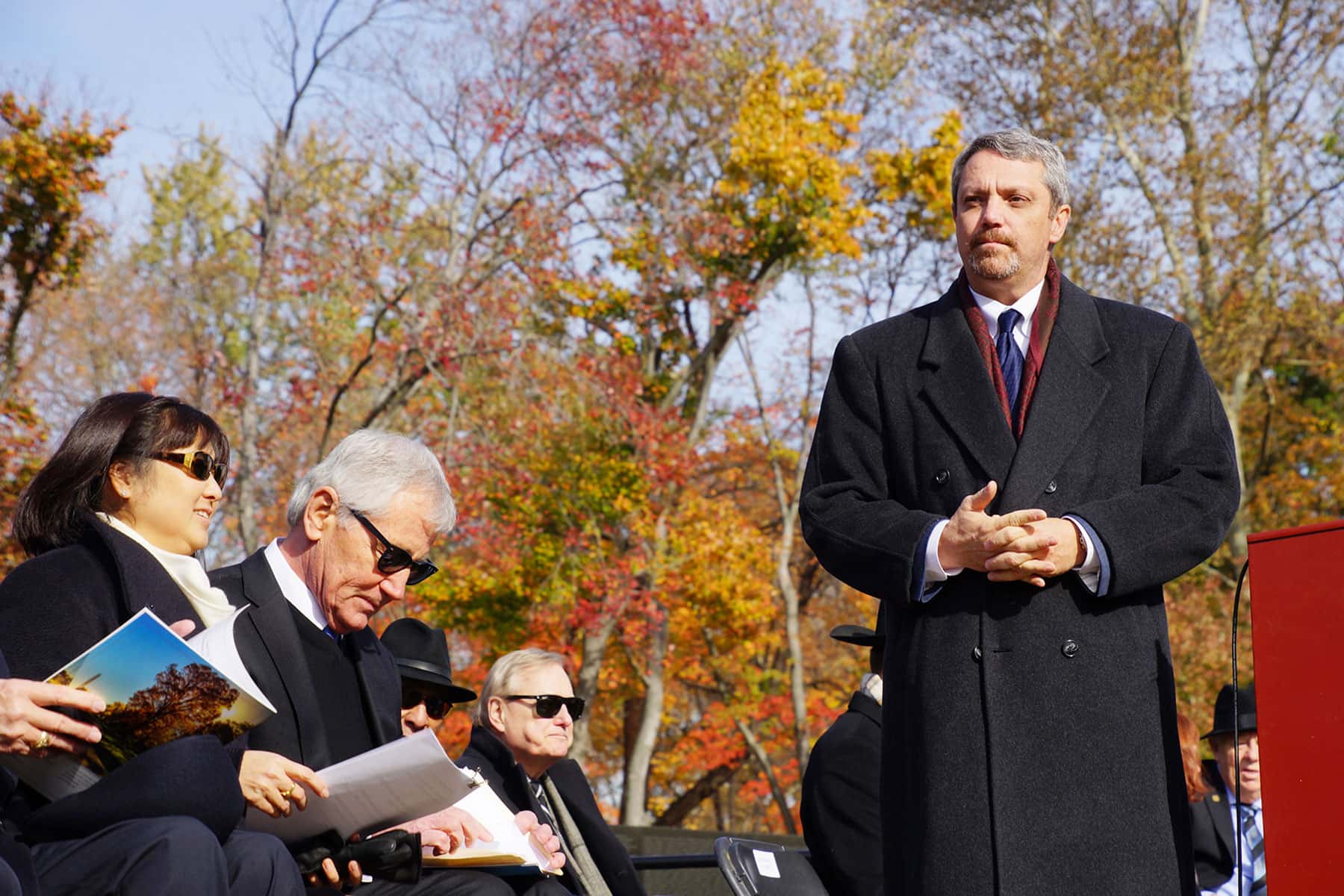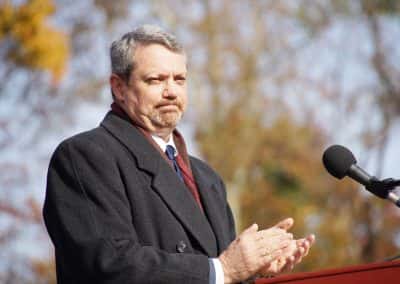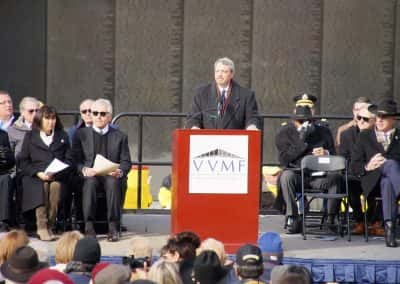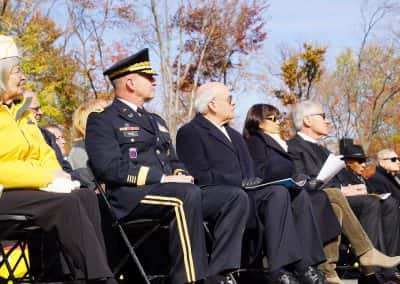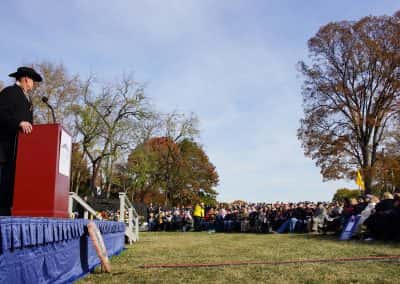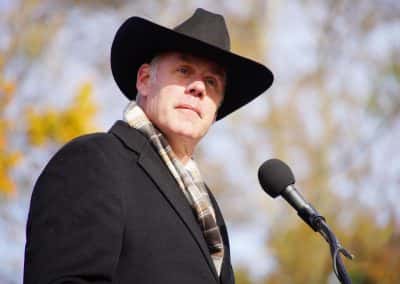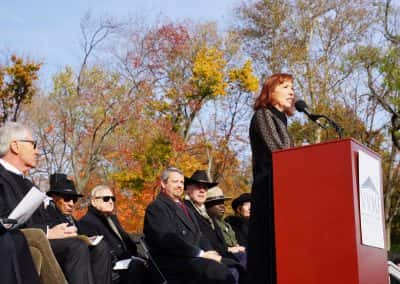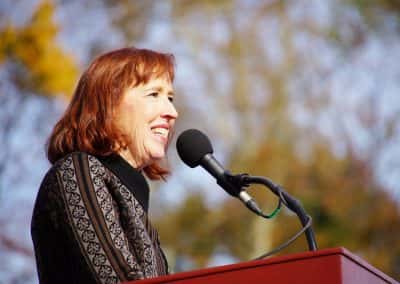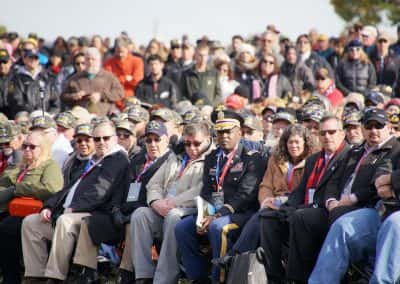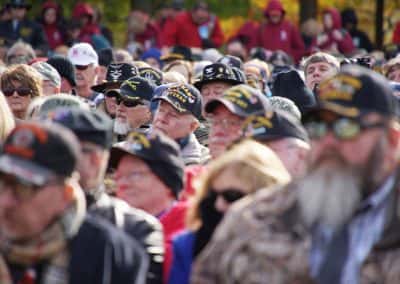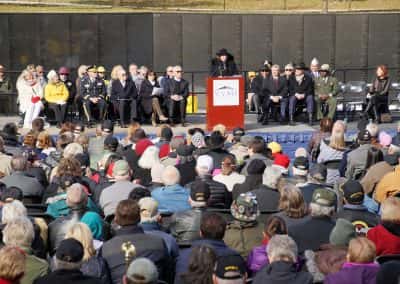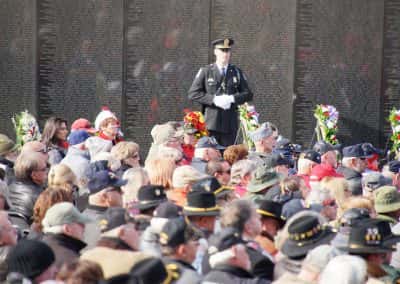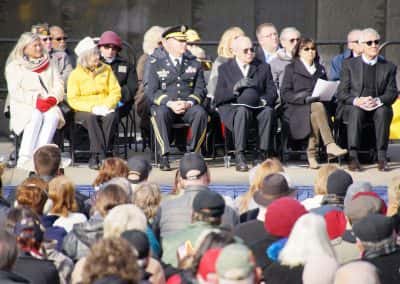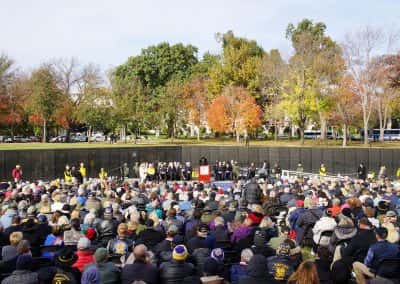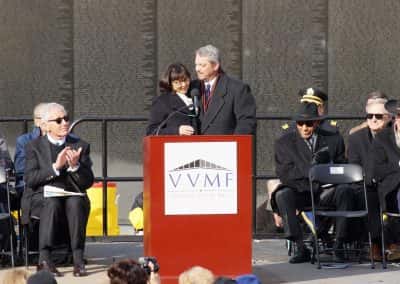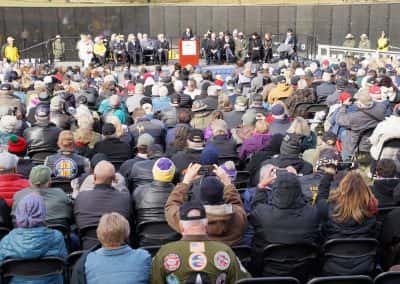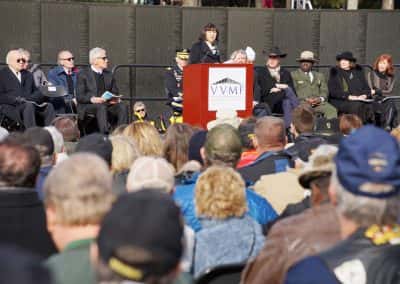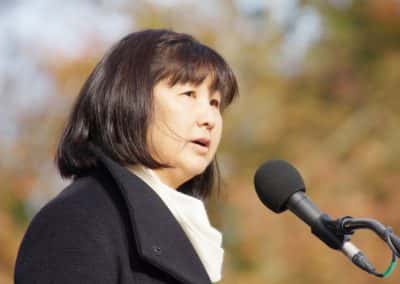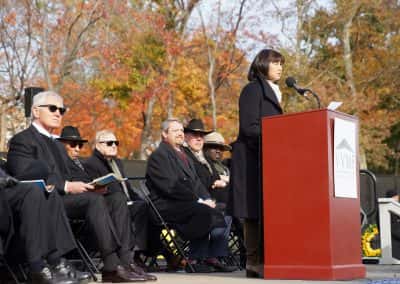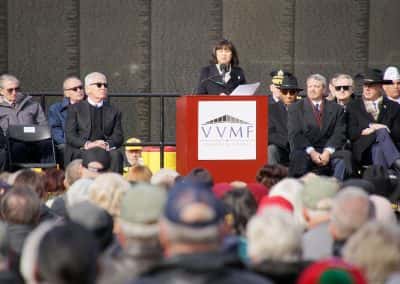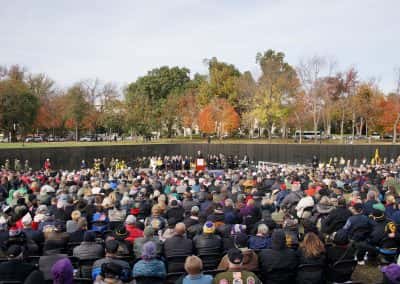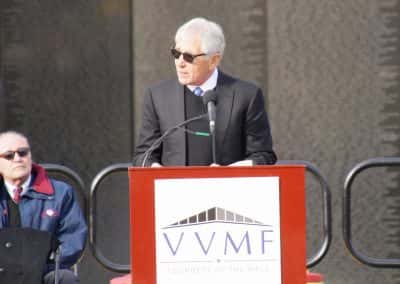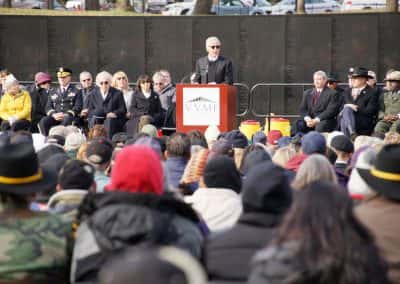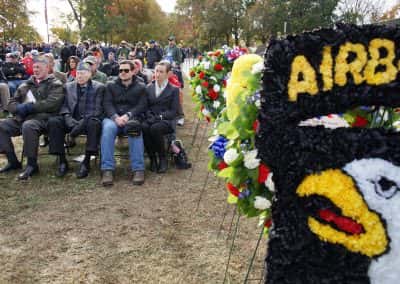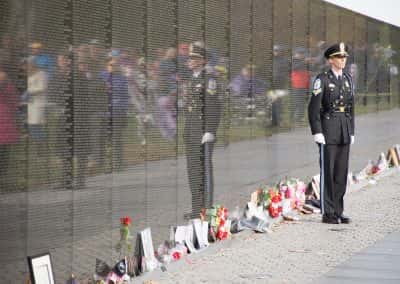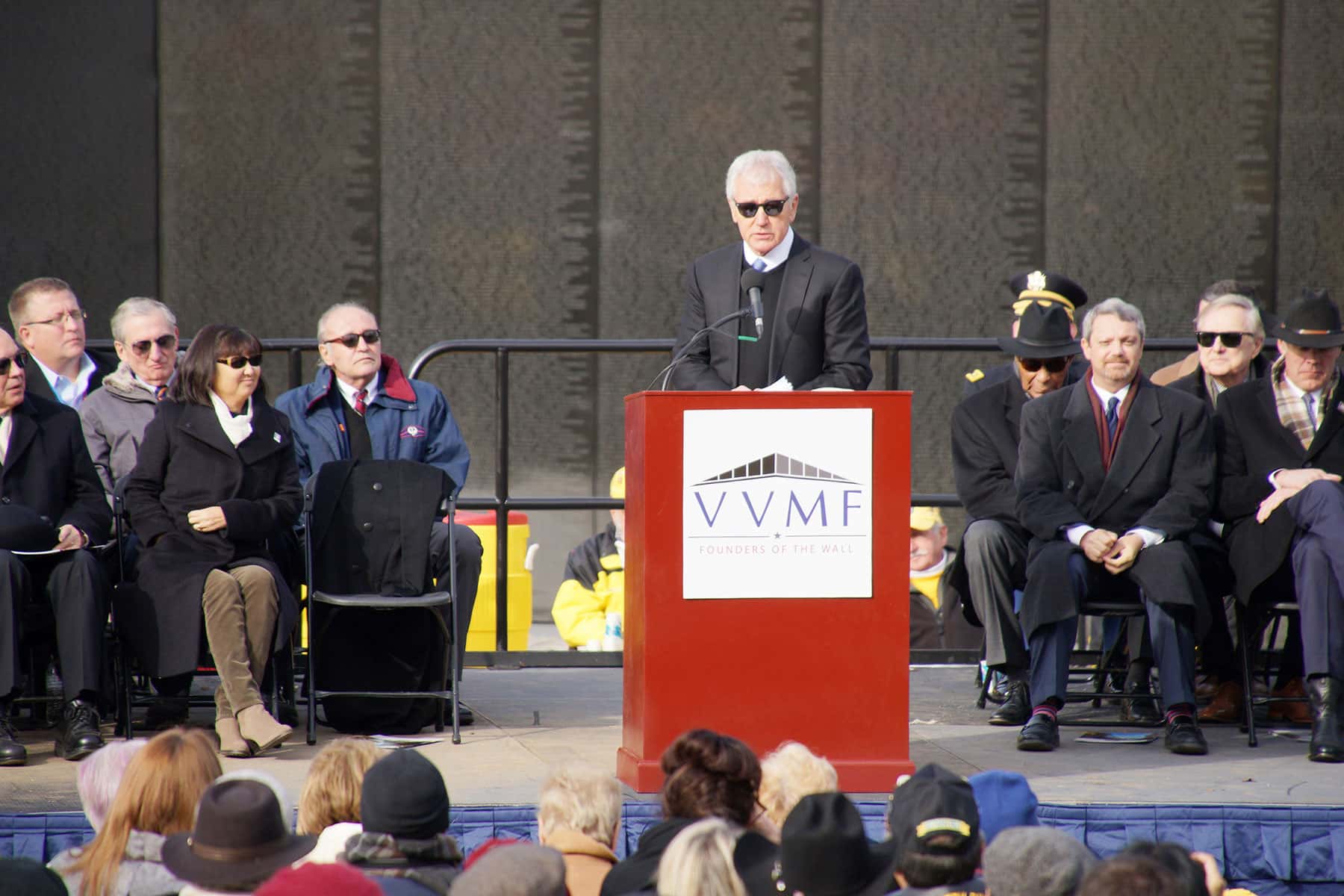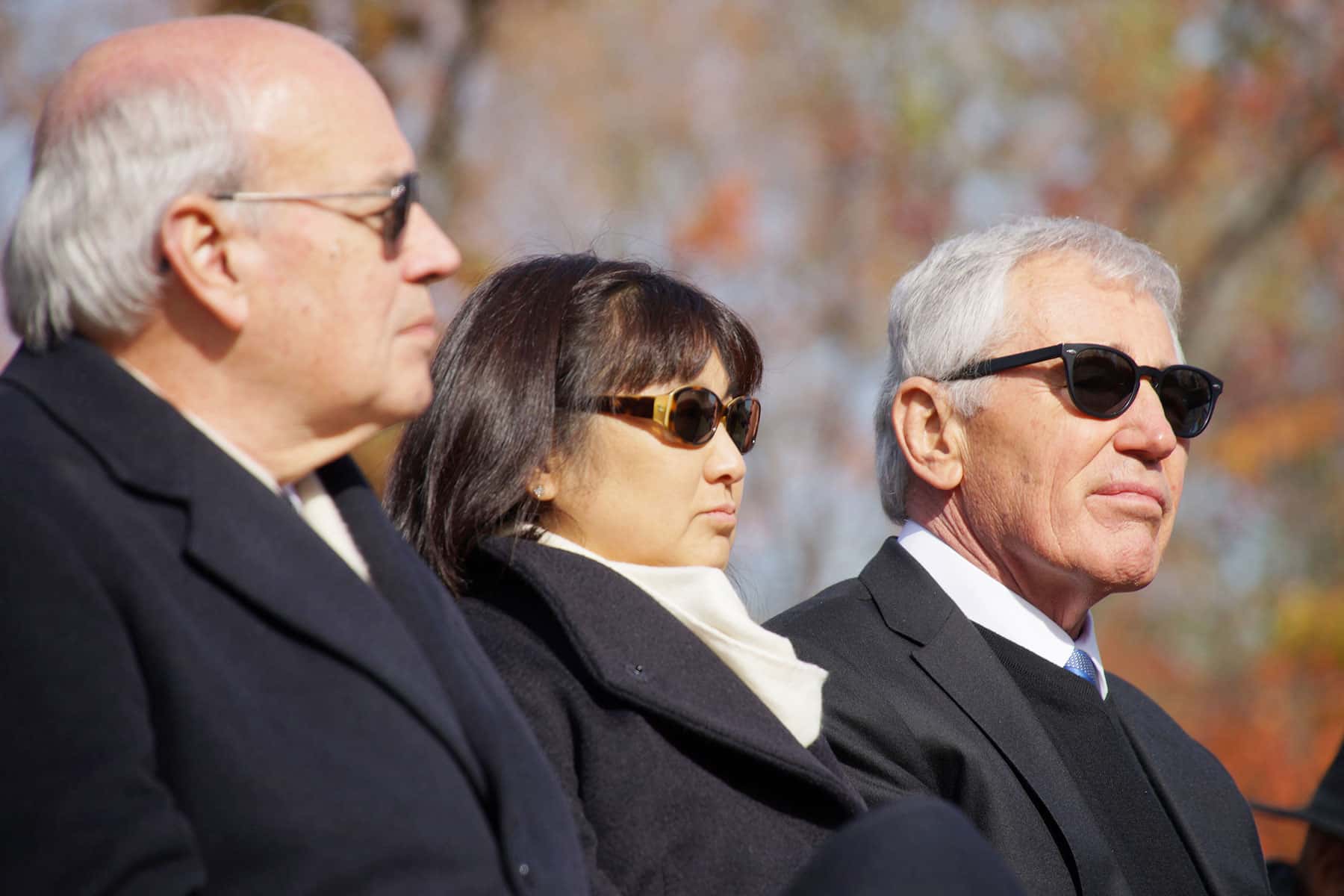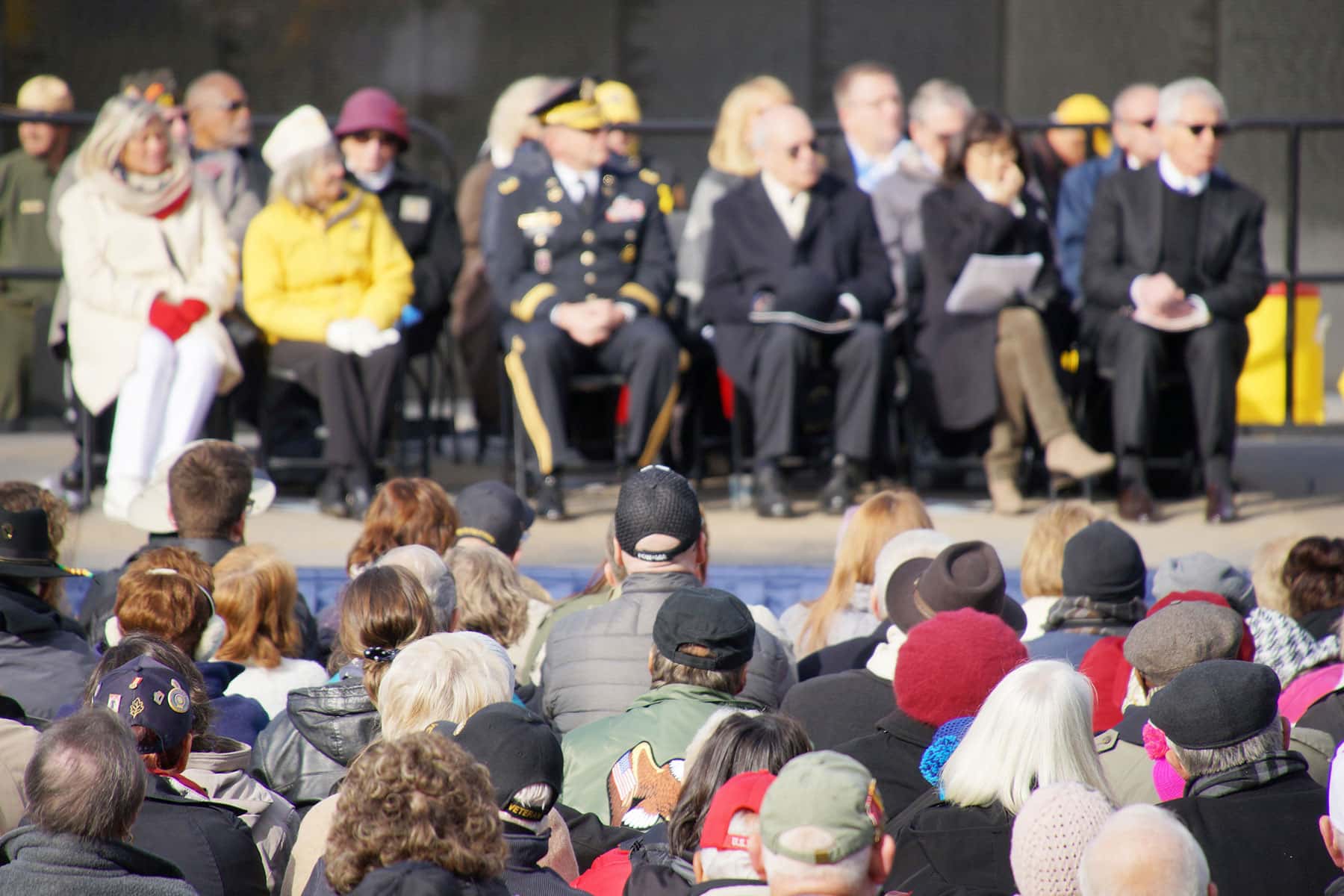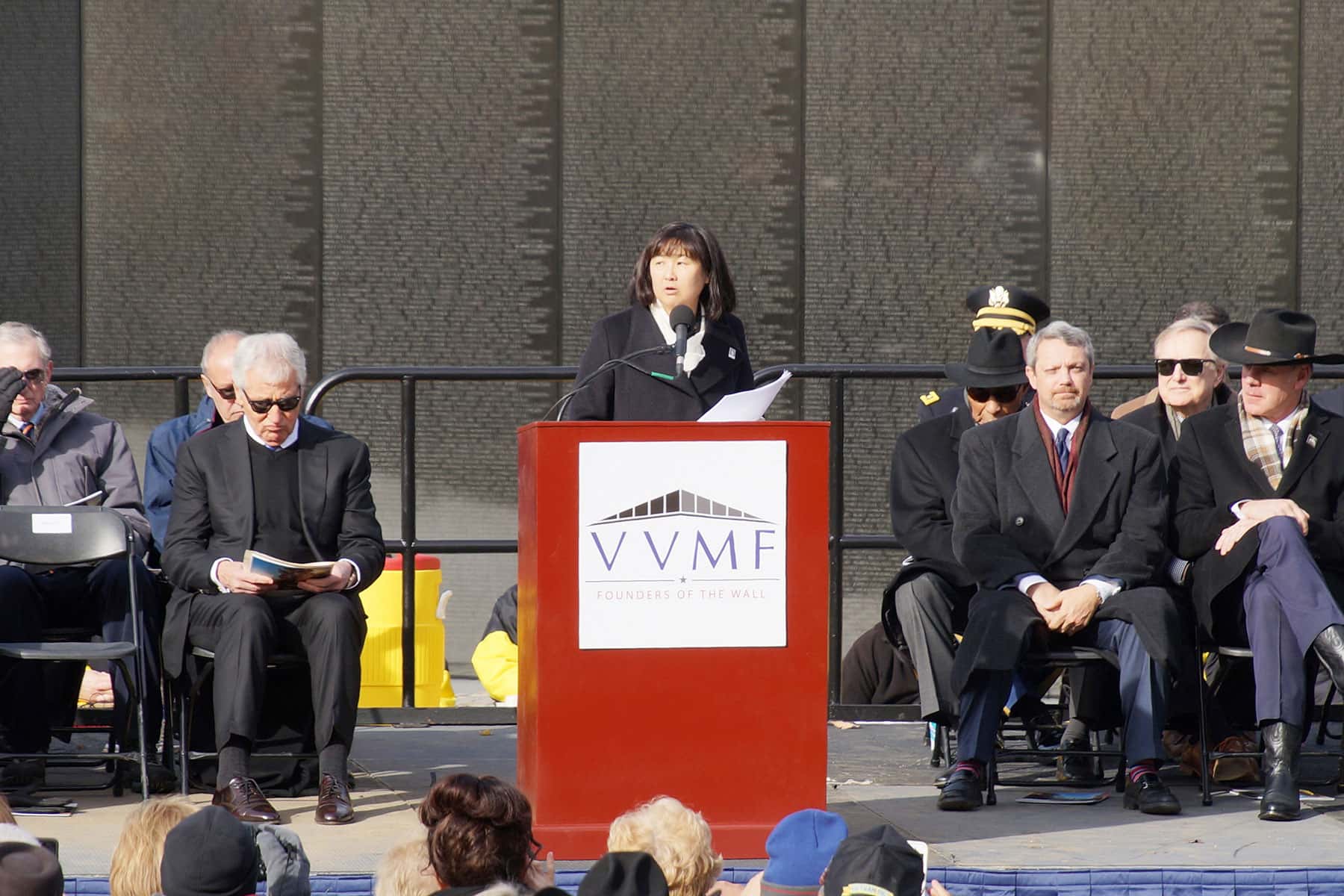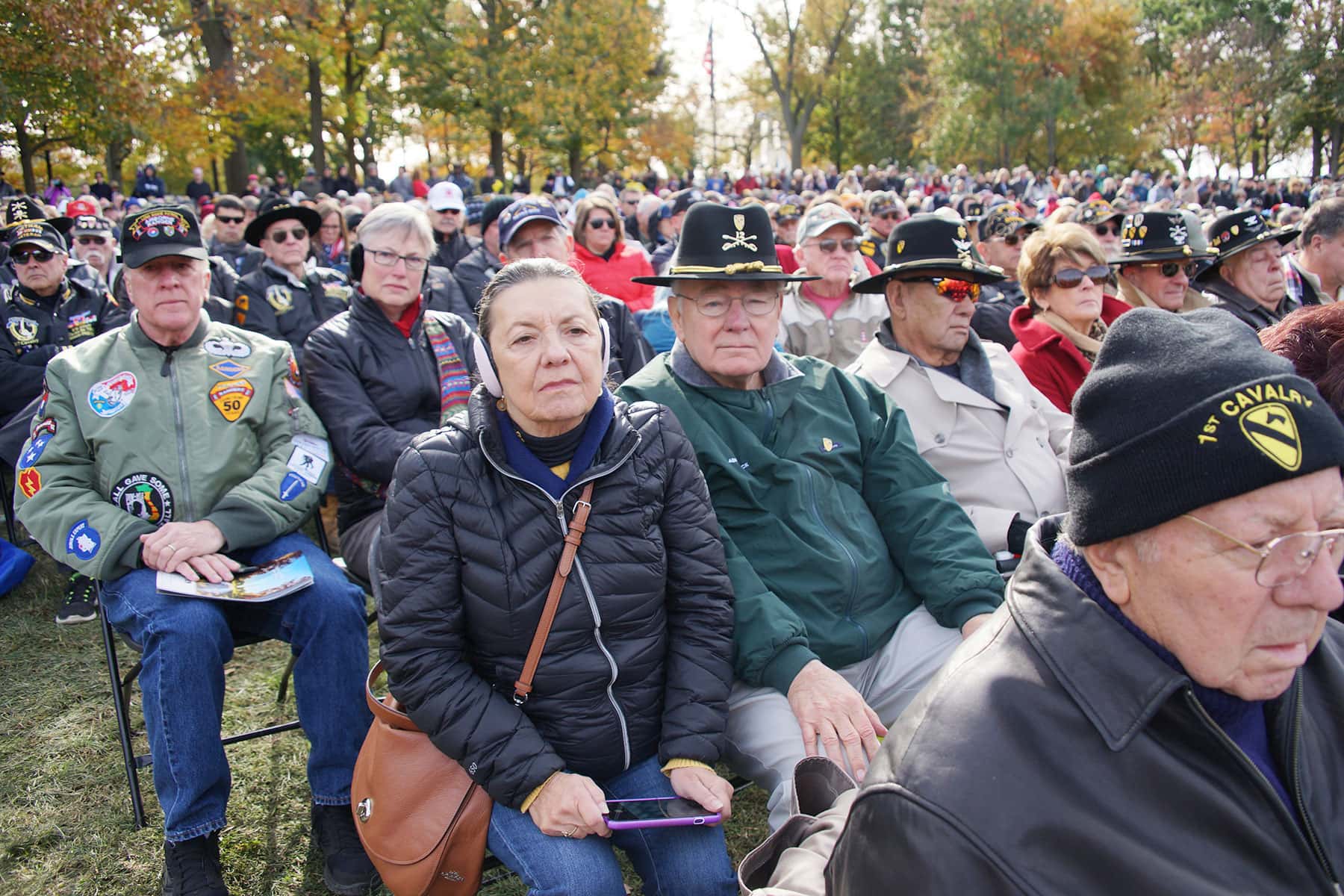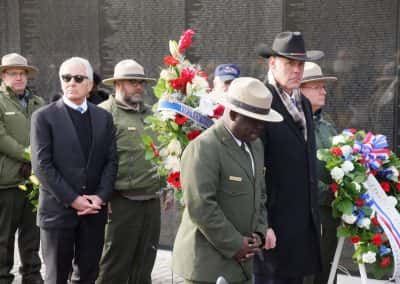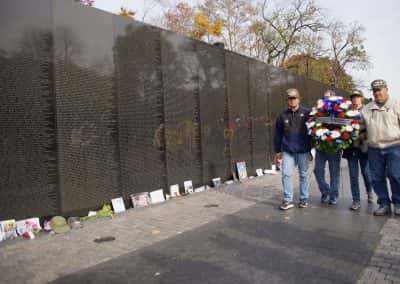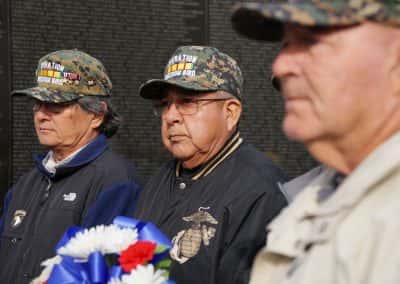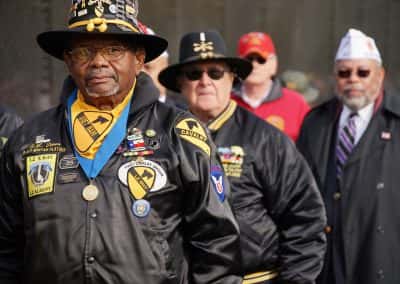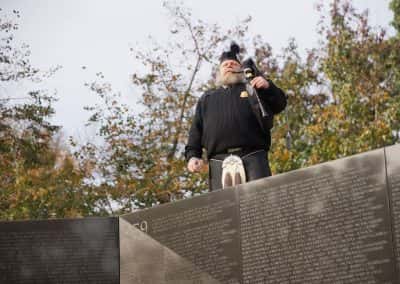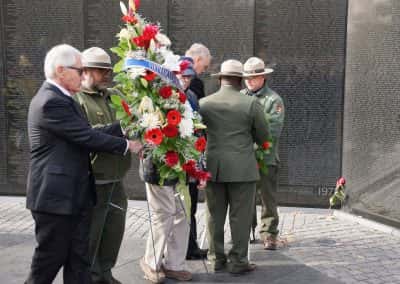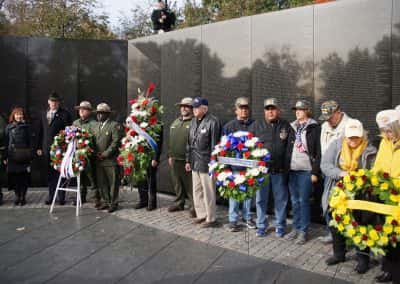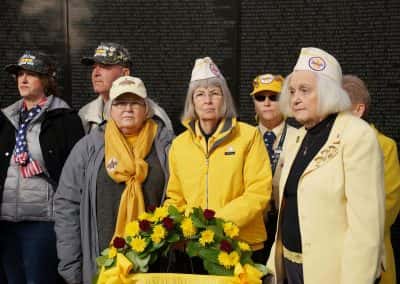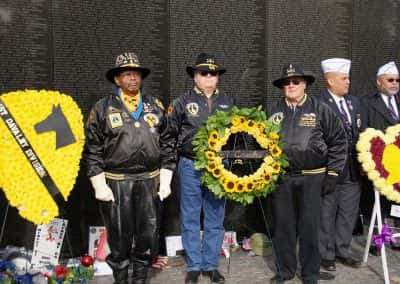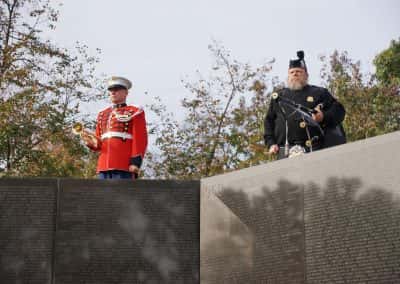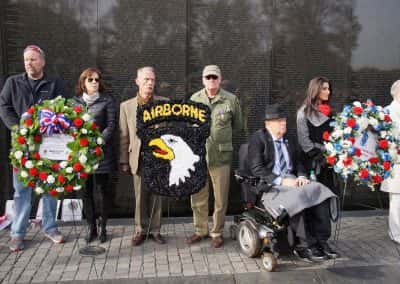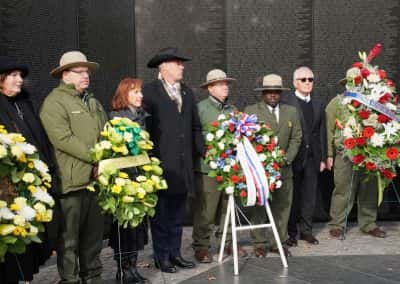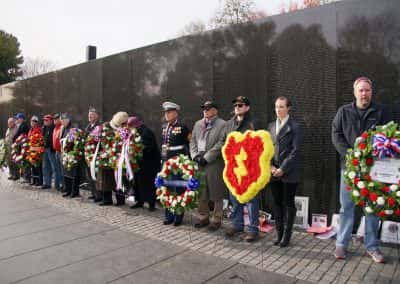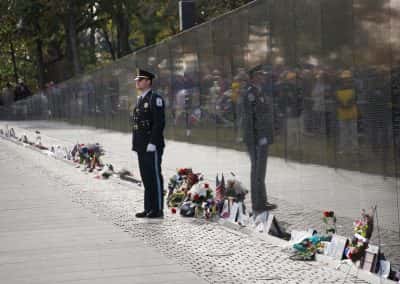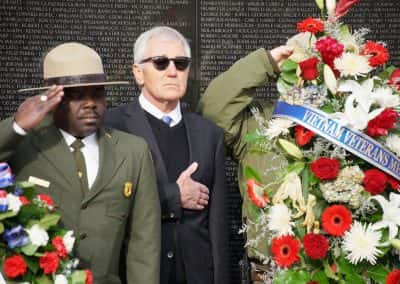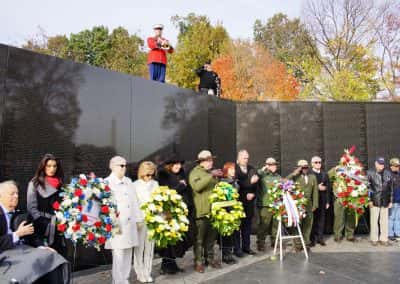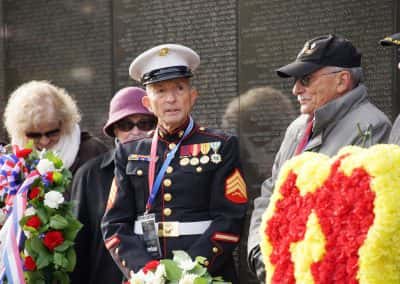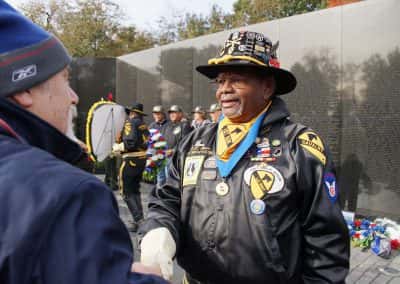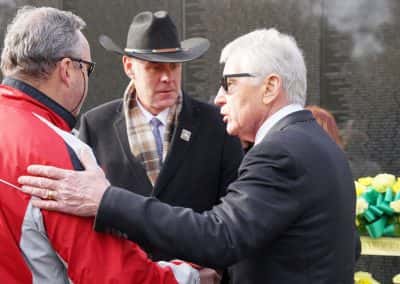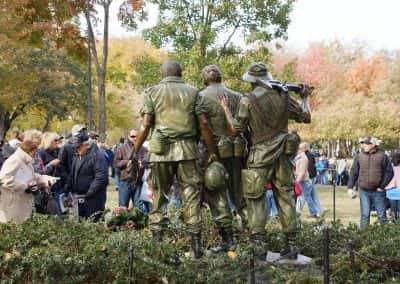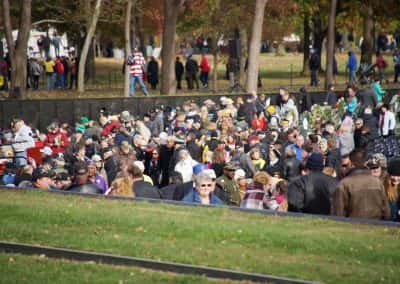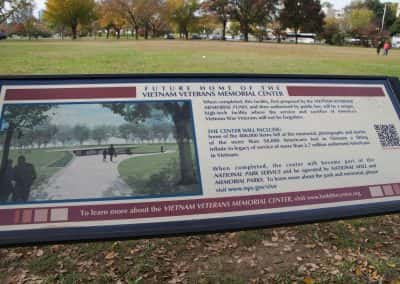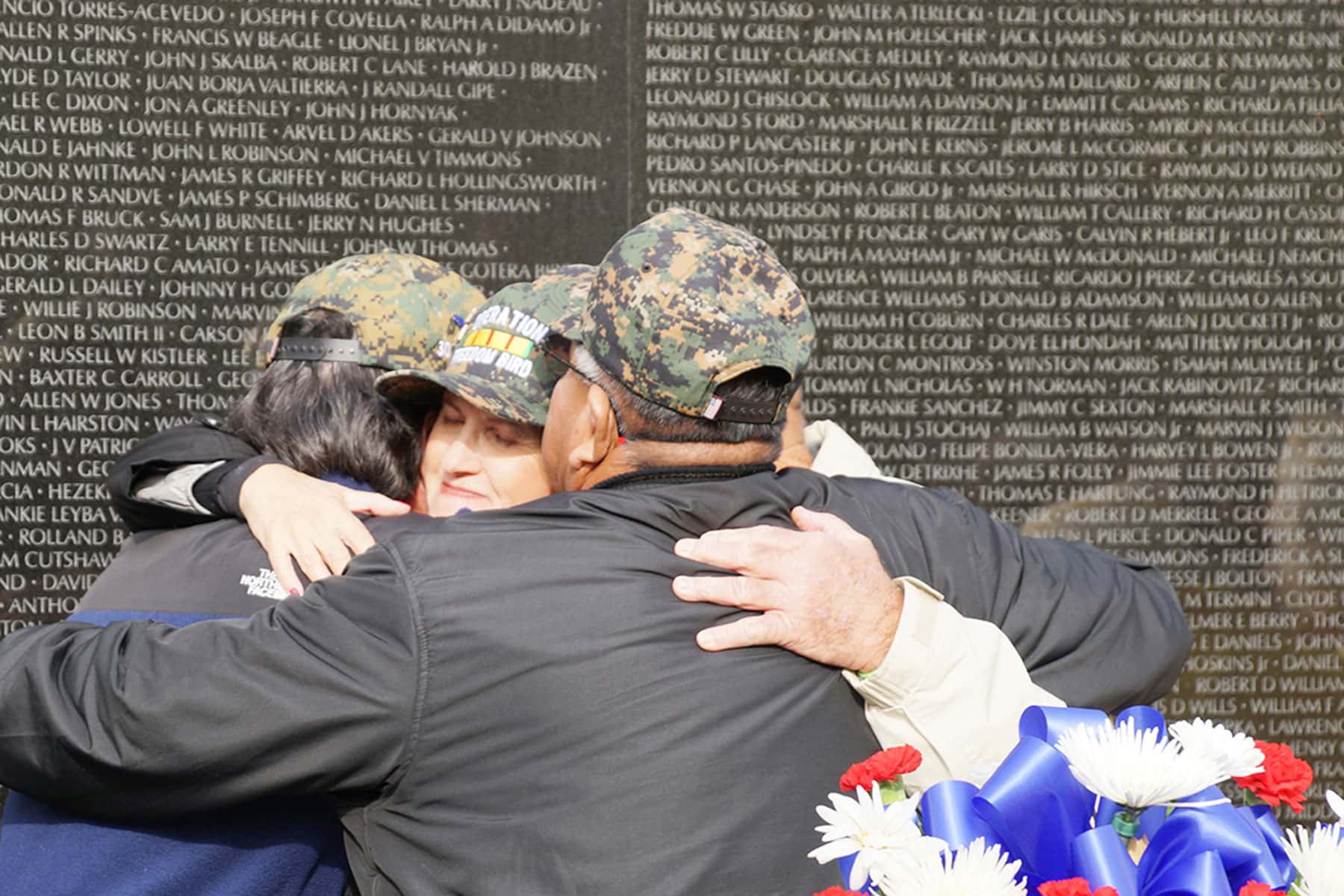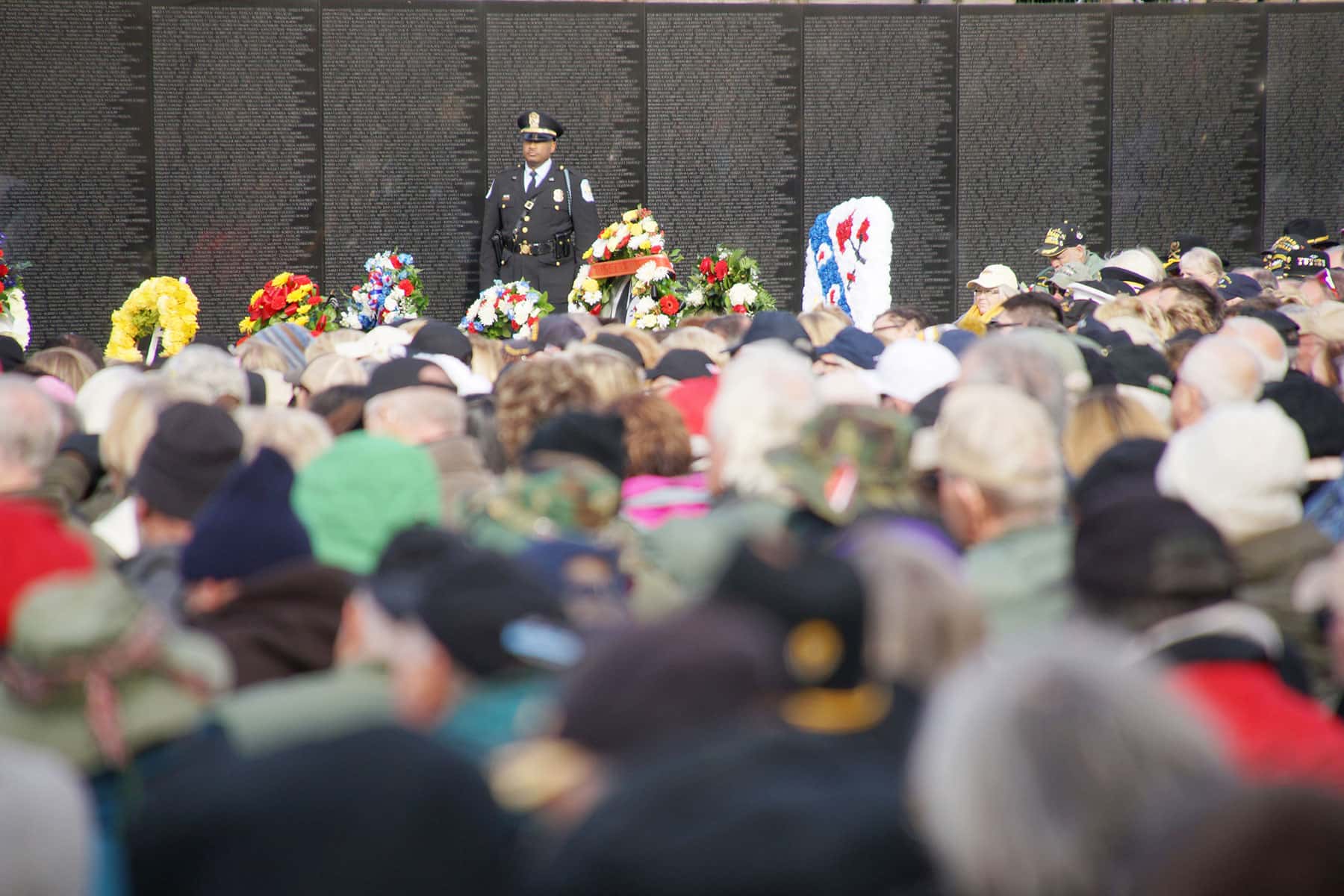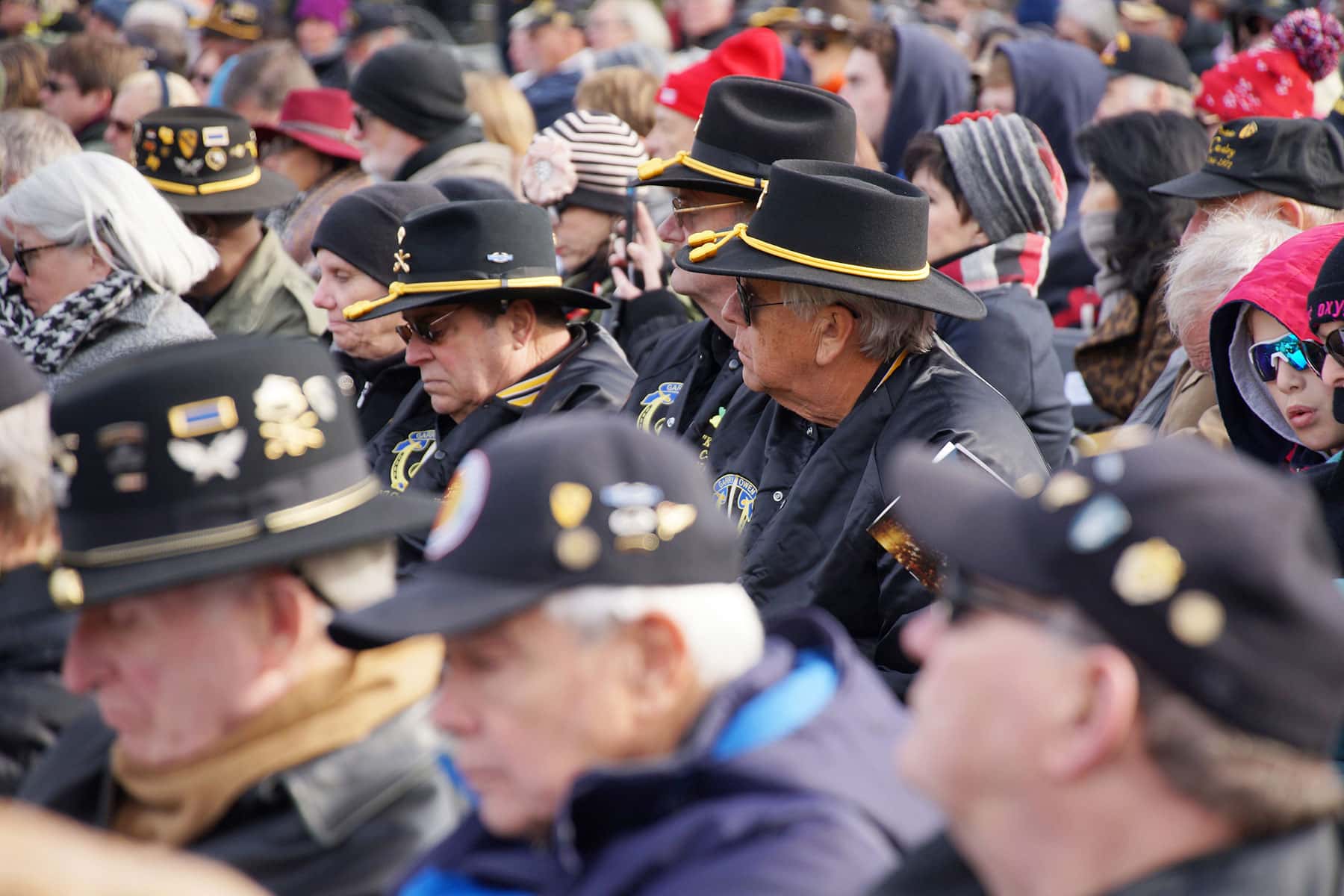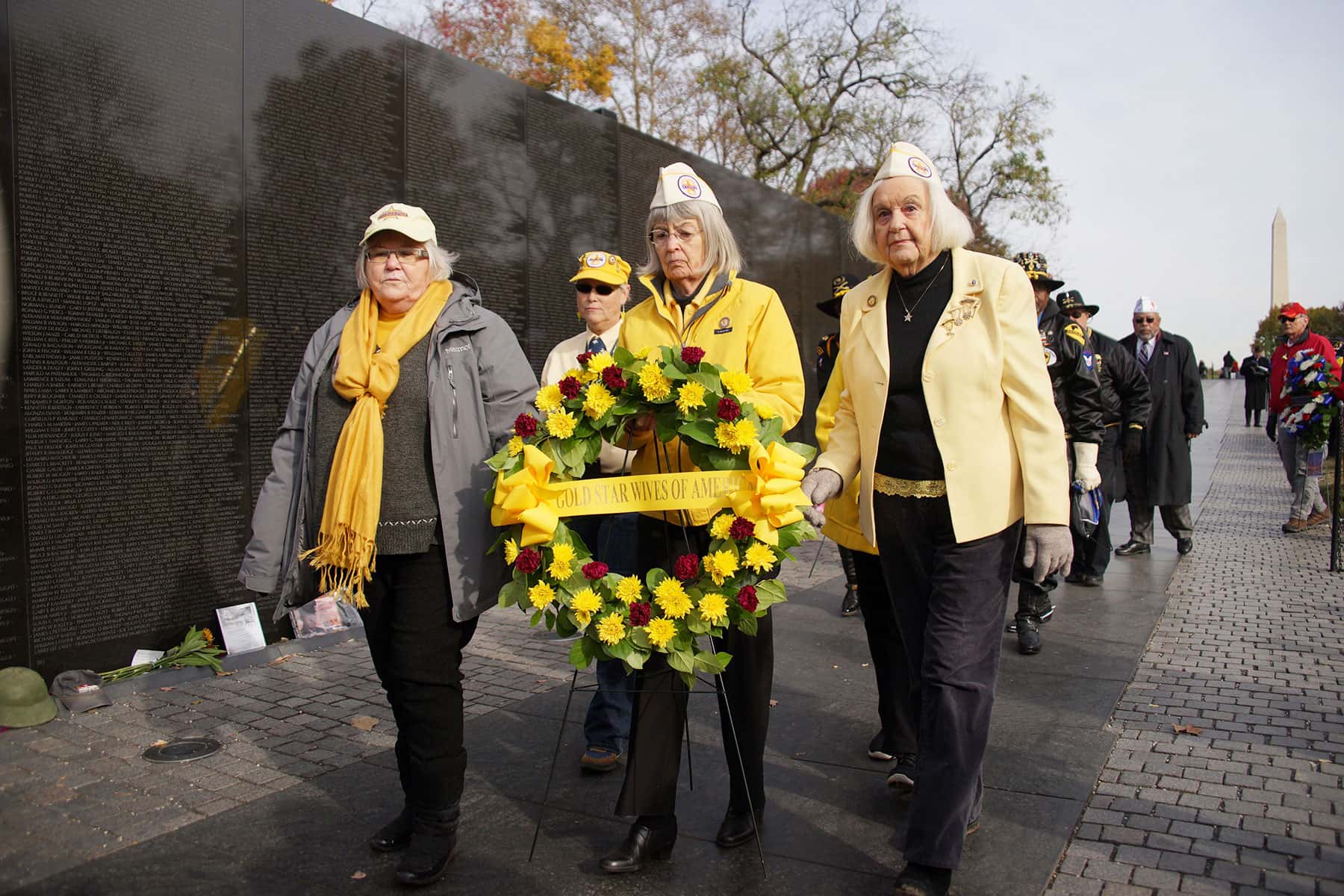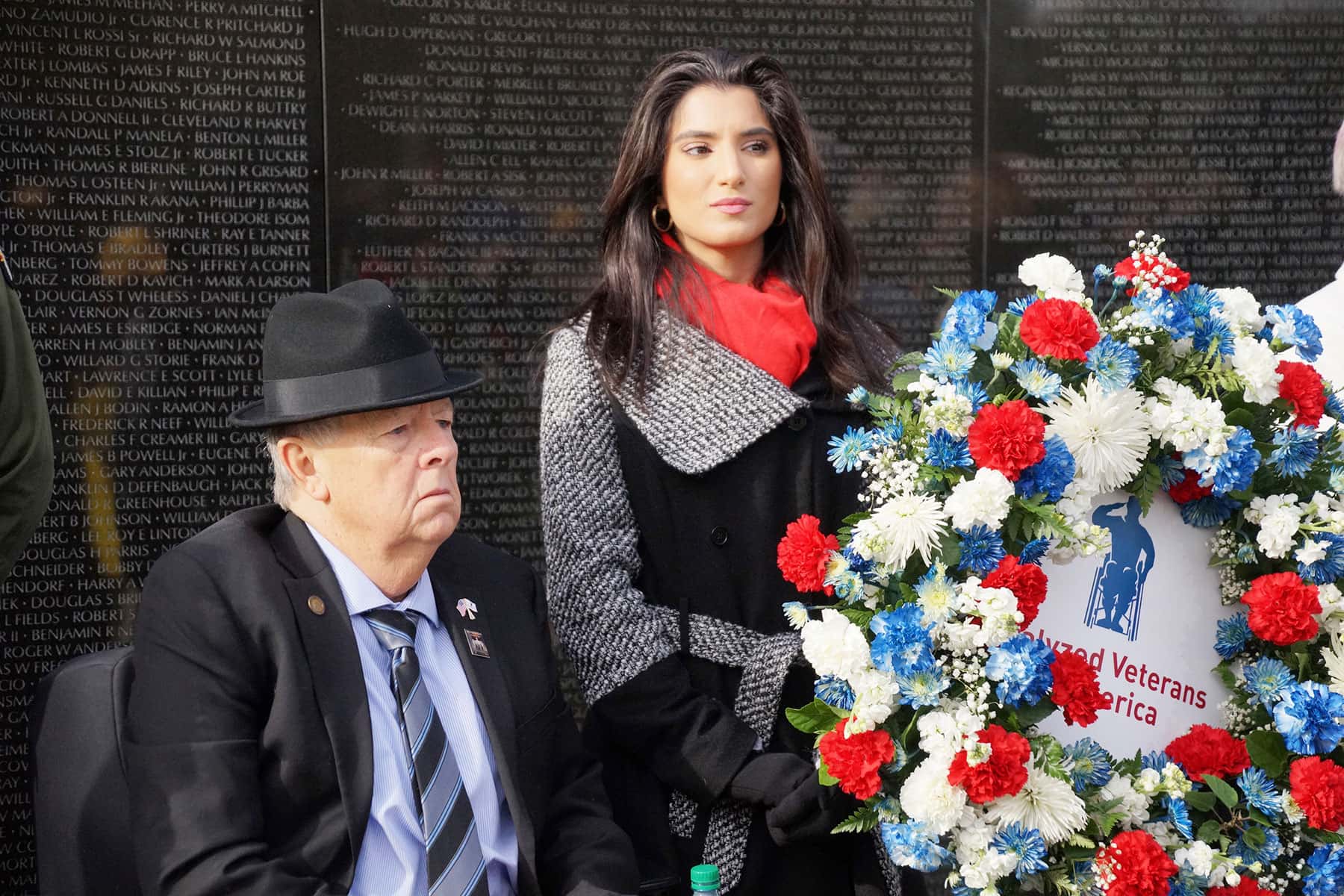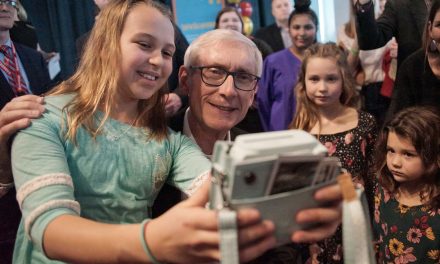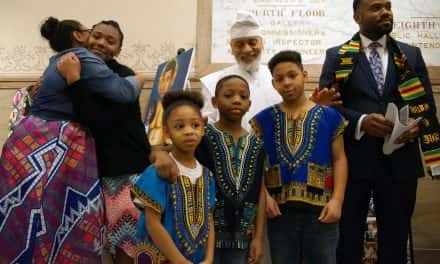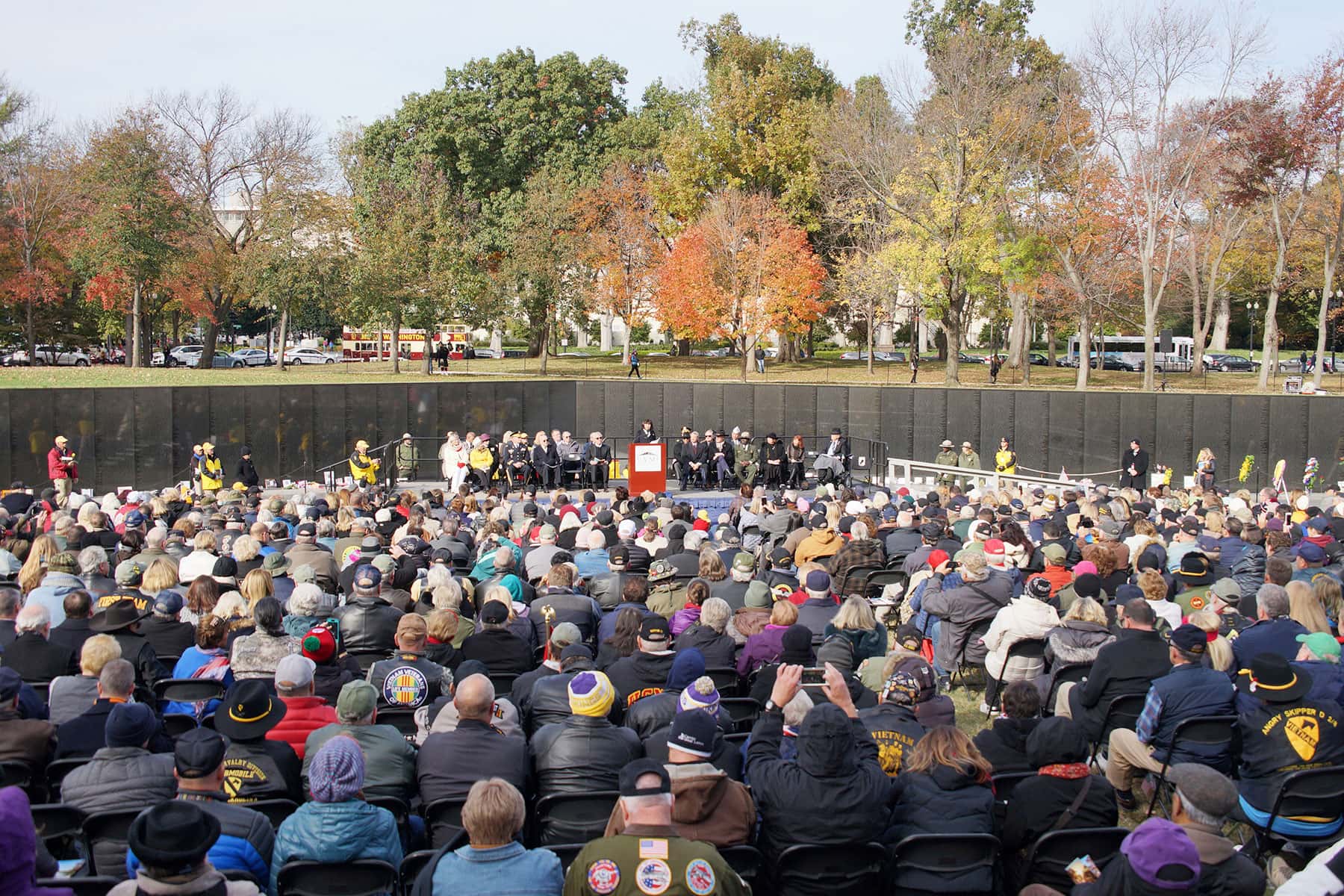
In honor of the 35th Anniversary of The Wall, the Vietnam Veterans Memorial, a week of events were hosted across Washington DC from November 7 to 11 and concluded with a special commemoration service.
The Vietnam Veterans Memorial Fund (VVMF) honored Maya Lin, the designer of The Wall, on November 11. The organization officially expressed thanks and gratitude for her design of the memorial, and for her lifetime of artistic work as part of the 35th anniversary of The Wall commemoration.
Critical to her design was the order of the names. Lin was a 21-year-old Yale undergraduate student when she won the design competition with her entry number 1026, unanimously selected by the jury. She fought tirelessly to achieve her vision for the memorial despite significant efforts to alter it and to compromise the design.
“At the intersection of these walls, on the right side, at the wall’s top, is carved the date of the first death. It is followed by the names of those who have died in the war, in chronological order,” said Lin. “These names continue on this wall, appearing to recede into the earth at the wall’s end. The names resume on the left wall, as the wall emerges from the earth, continuing back to the origin, where the date of the last death is carved, at the bottom of this wall. Thus the war’s beginning and end meet, the war is ‘complete,’ coming full circle.”
The idea for building a Vietnam Veterans Memorial in Washington DC came from Jan Scruggs, a wounded and decorated Vietnam veteran, who wanted to make sure that the names of all those who died in Vietnam were remembered. The Wall has become one of the most beloved and cherished memorials in Washington DC, but after 35 years the public has forgotten how divisive the design was and the fight it took to accomplish.
On May 6, 1981, a press conference was held to announce the winner and the initial public reaction was generally positive. But several weeks after the announcement, a handful of people began to protest the design. They complained about the walls being black. They did not like the idea that it was below ground level. They did not like its minimalist design. Lin herself became a focus of contention. Opponents of the design made an issue of her race, her age, and her gender. Various parties sought to alter, undermine, and gain control of the design. Lin fought fiercely to maintain her artistic vision and to retain the powerful simplicity of The Wall.
“The Wall is a memorial like no other. It is a memorial that remembers individual sacrifice. Each family member or loved one that visits has a different experience. When I look at The Wall, I feel pride for serving my country and respect for all those who served and especially those who sacrificed everything and didn’t make it home. They each had a family they left behind that was changed forever by their loss,” said Chuck Hagel, 24th Secretary of Defense. “The Wall should serve as a reminder for generations to come of the price of war. I have been privileged to lead the 35th Anniversary of The Wall commemorative committee this past year.”
The impact of The Wall over the last 35 years has been wide-ranging. It separated the war from the warrior and changed the way America treats those who return from serving in the military. Veterans refer to its “healing” power. Attracting more than five million visitors each year, The Wall is considered one of the most incredible works of art in the world.
During the ceremony, President Obama said, “The Vietnam Veterans Memorial has changed the way we think about monuments, but also about how we think about sacrifice, and patriotism, and ourselves. Maya’s pieces have changed the landscape of our country and influenced the dialogue of our society, never more profoundly than with her tribute to the Americans who fell in Vietnam by cutting a wound into the Earth to create a sacred place of healing in our Nation’s capital.”
In 1996, a documentary chronicling her work, “Maya Lin, A Strong Clear Vision,” won the academy award for best documentary. Lin is a National Medal of the Arts winner and was elected to the National Women’s Hall of Fame. In 2016, she was awarded the Presidential Medal of Freedom by President Barack Obama, the nation’s highest civilian honor.
“This year a new and much needed conversation about the Vietnam War has started, as a result of the Ken Burns and Lynn Novick film. We must keep the conversation going so that we continue to educate current and future generations about the impact of the Vietnam War,” said Jim Knotts, President and CEO of Vietnam Veterans Memorial Fund (VVMF). “The next step is to build the Education Center at The Wall, so that we can ensure that for generations to come, American service members are properly honored and receive the recognition they justly deserve. The campaign to build the Center has gained momentum this year but there is still a long way to go and we need your help to make it a reality.”
Facts about The Wall
- There were 1,421 entries judged as part of the design competition for the Vietnam Veterans Memorial.
- The Vietnam Veterans Memorial was built with all private funds from donations large and small.
- When The Wall was dedicated in 1982, it had 57,939 names inscribed on it. Today, there are 58,318 names on The Wall.
- The Wall is nearly 500 feet in length and stands slightly more than 10 feet tall at its highest point.
- The Wall is composed of black granite from Bangalore, India.
- There are 160 Medal of Honor recipients listed on The Wall.
- There are 8 women listed on The Wall.
- There are 16 chaplains listed on The Wall.
- The average age of service members on The Wall is 22 years, 9 months.
- Each name is preceded (on the west wall) or followed (on the east wall) by a symbol designating status. The diamond symbol denotes that the service member’s death was confirmed. The cross (or plus) symbol denotes missing in action.
- The youngest service member listed on the The Wall, Dan Bullock, was 15 years old when he was killed in Vietnam.
- Thee are 64 graduates of Thomas Edison High School in Philadelphia on The Wall, the most from any high school.
- Service members who died in 1968, the deadliest year of the war, cover 72 of the 140 panels on The Wall.
- There have been more than 400,000 items left at The Wall since its dedication in 1982.
- Lynn Novick: A discussion about her Vietnam War film on Veterans Day
- The irony of visiting heroes at Arlington, the former home of a national traitor
- Photo Essay: Seeing the Nation’s Capital with Milwaukee Eyes
- George Banda: Honoring lost friends in vigil to Vietnam veterans at The Wall
- Maya Lin: Ceremony marks 35th anniversary of Vietnam Memorial’s healing power

